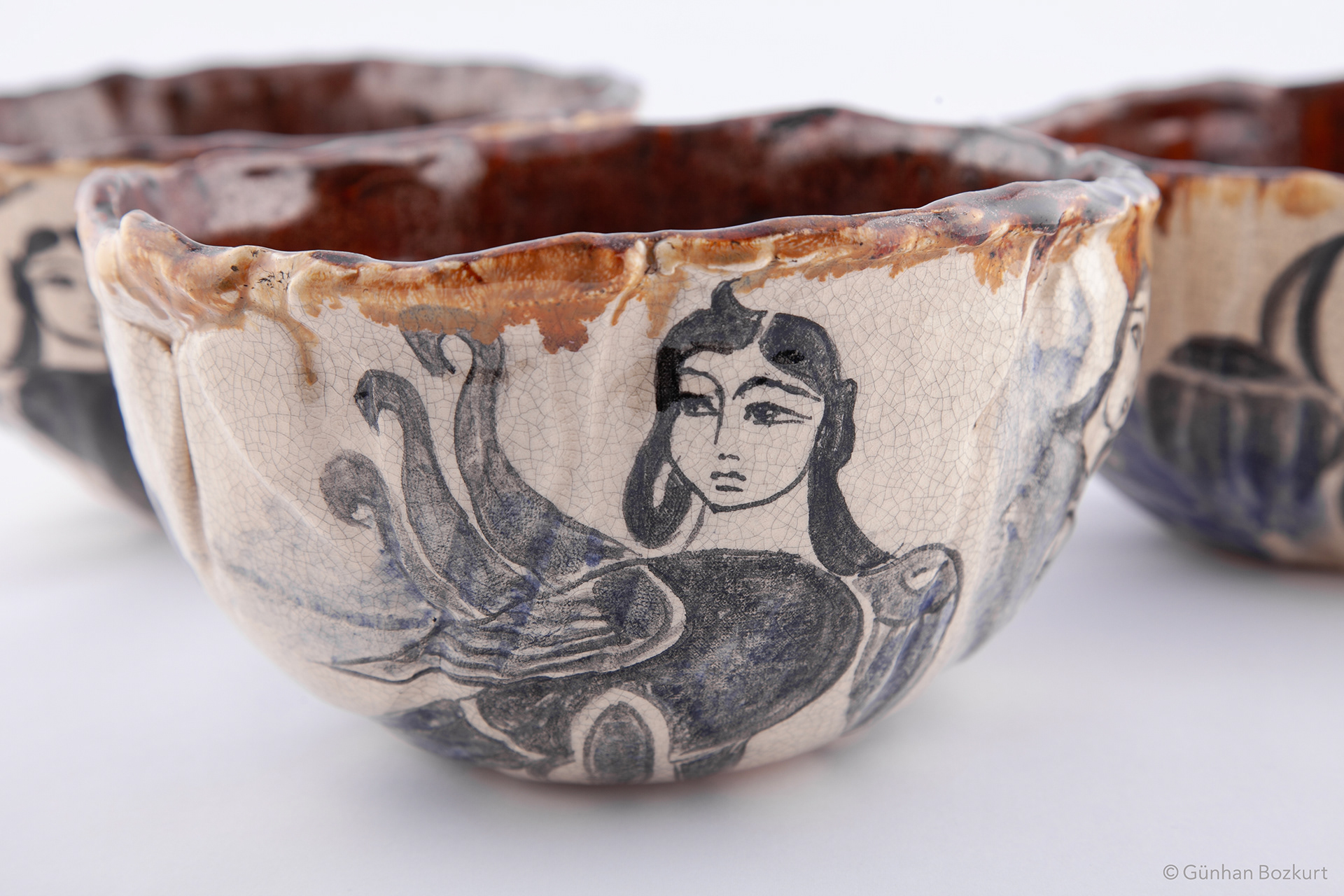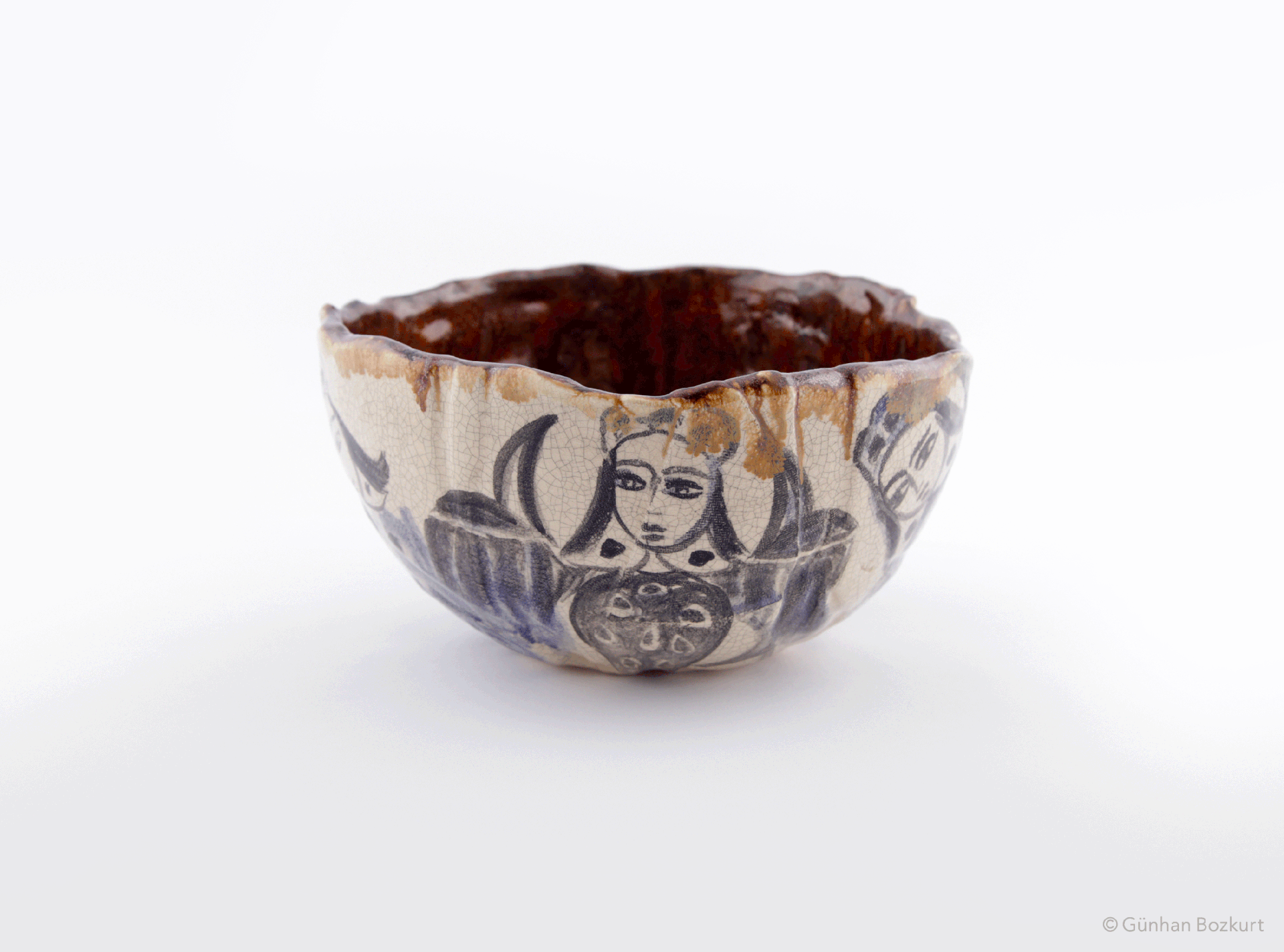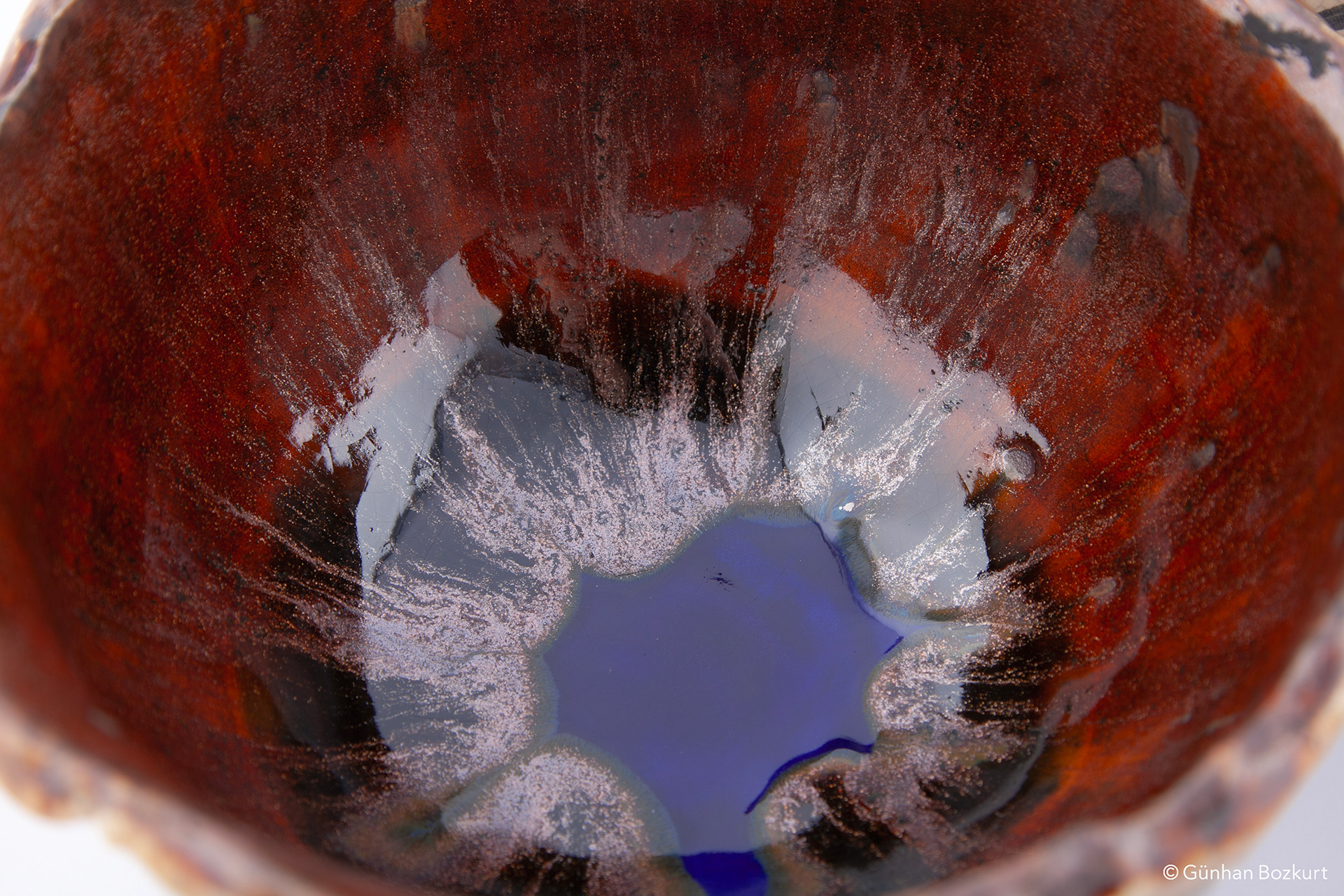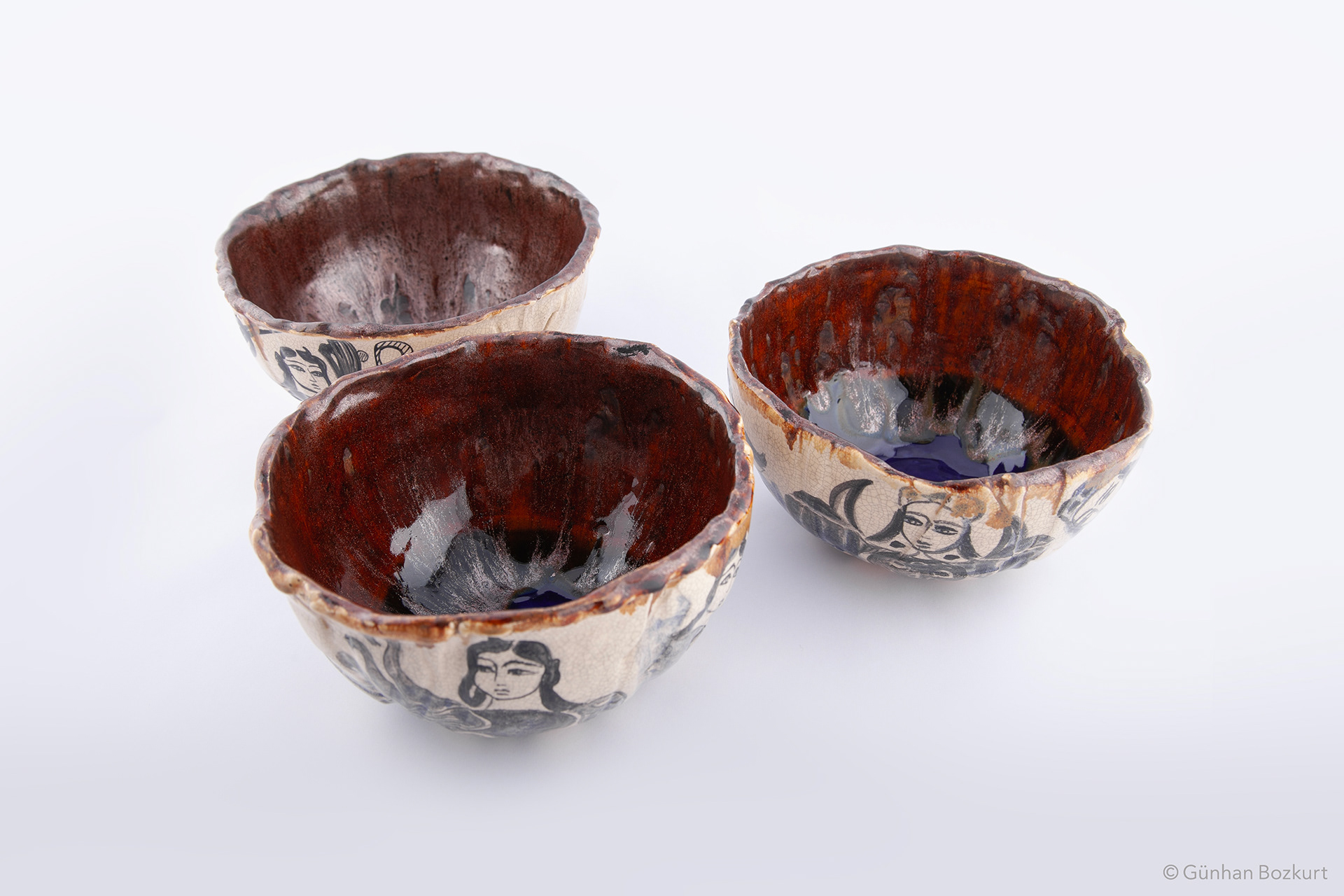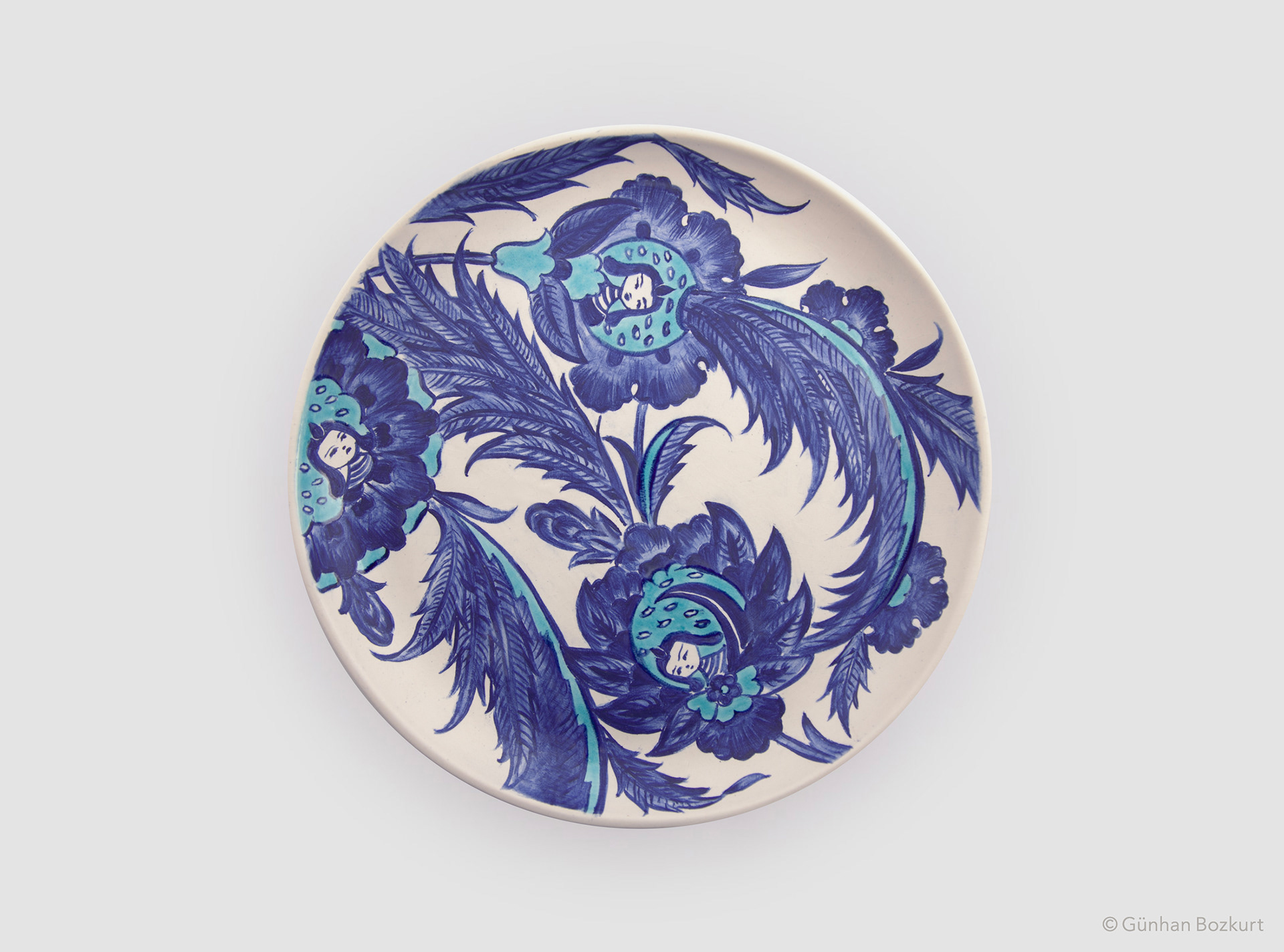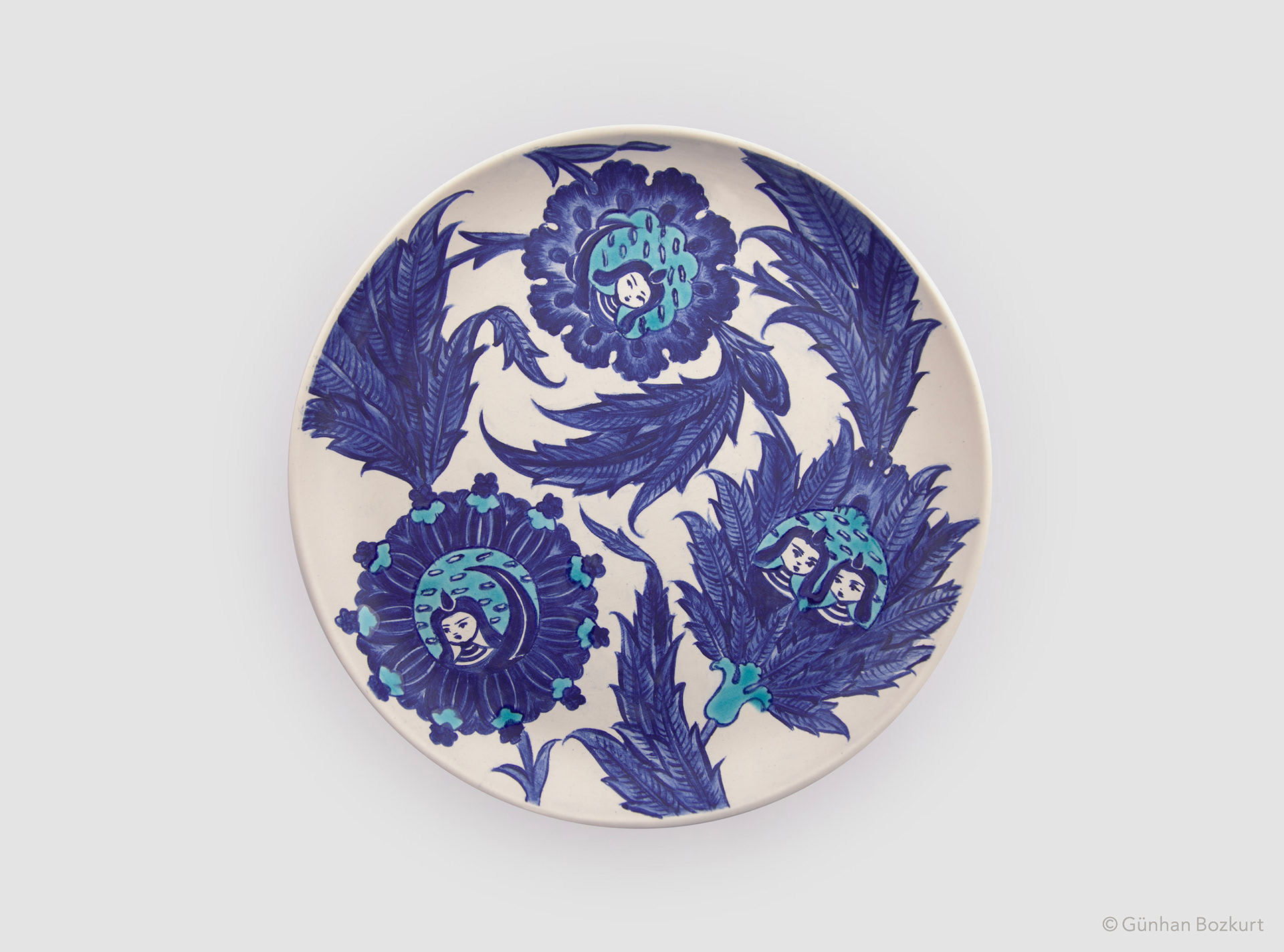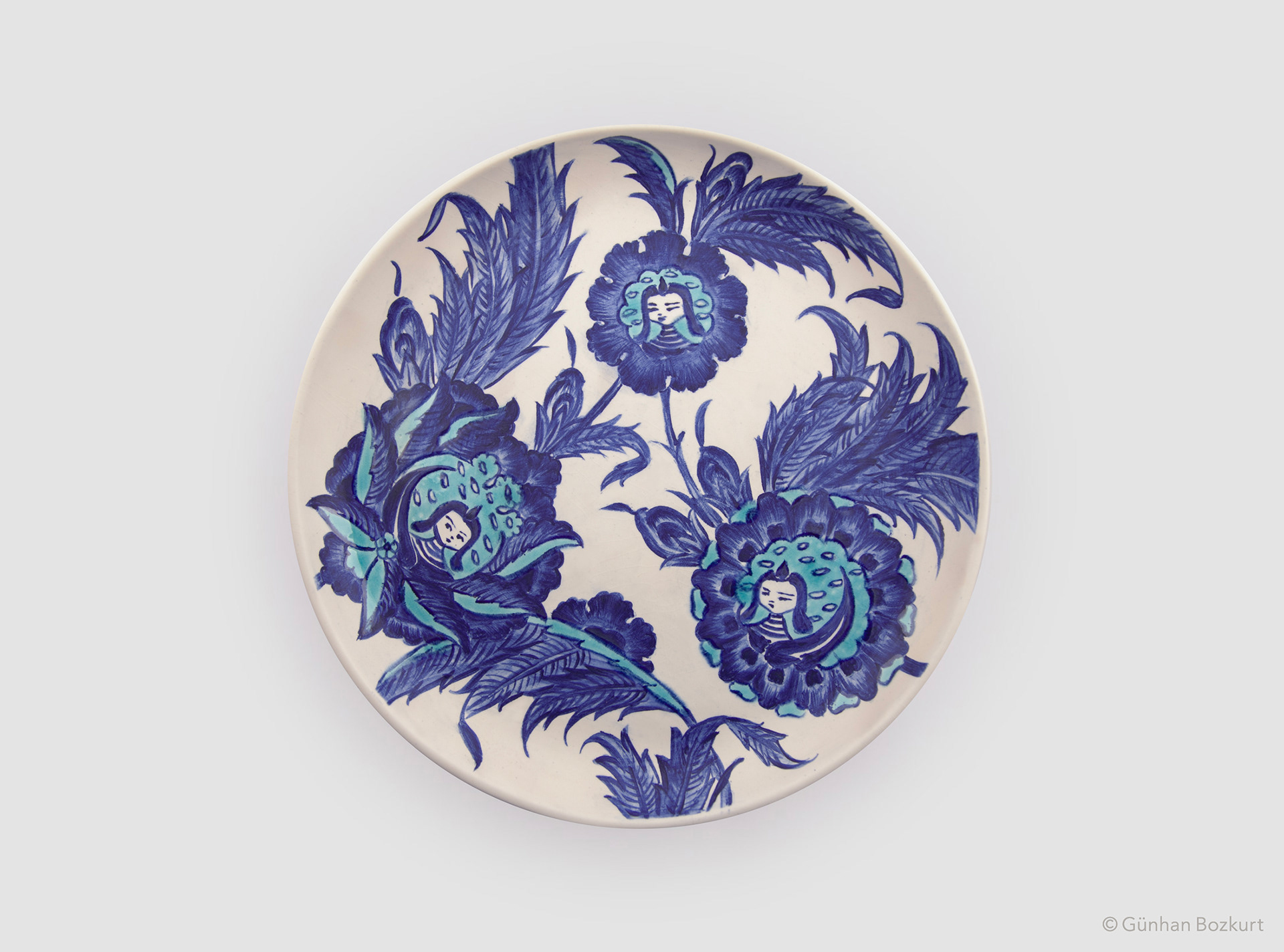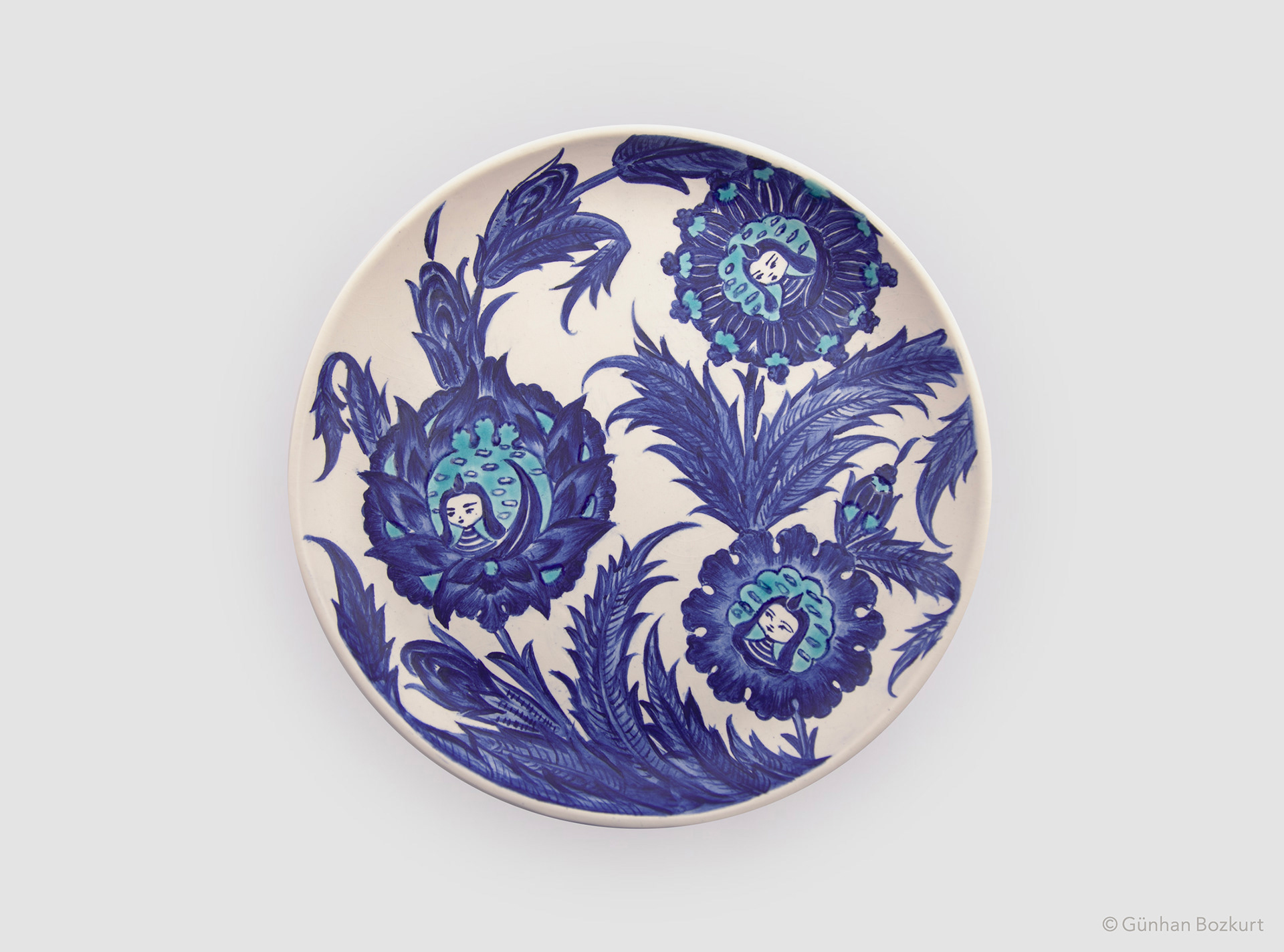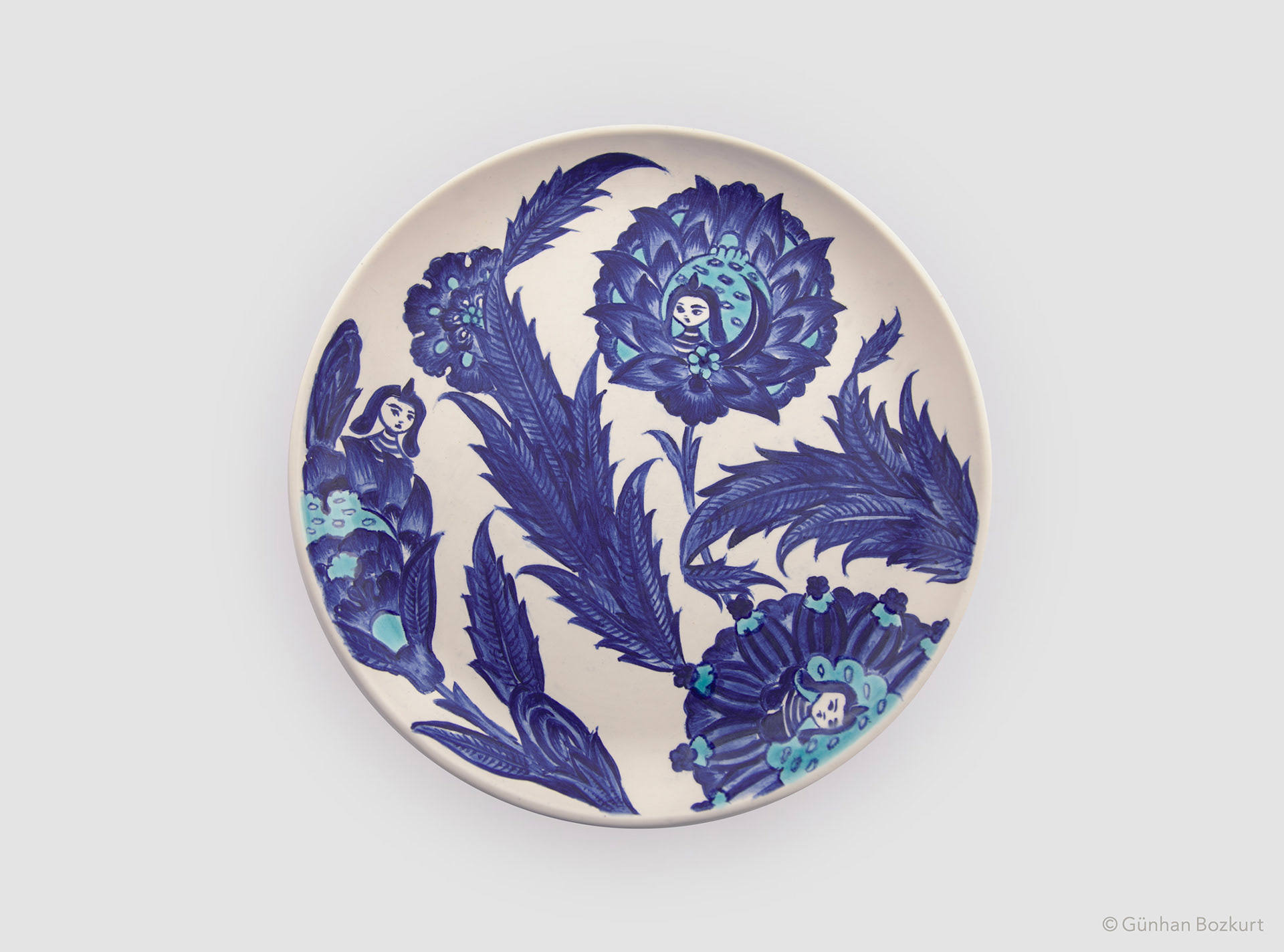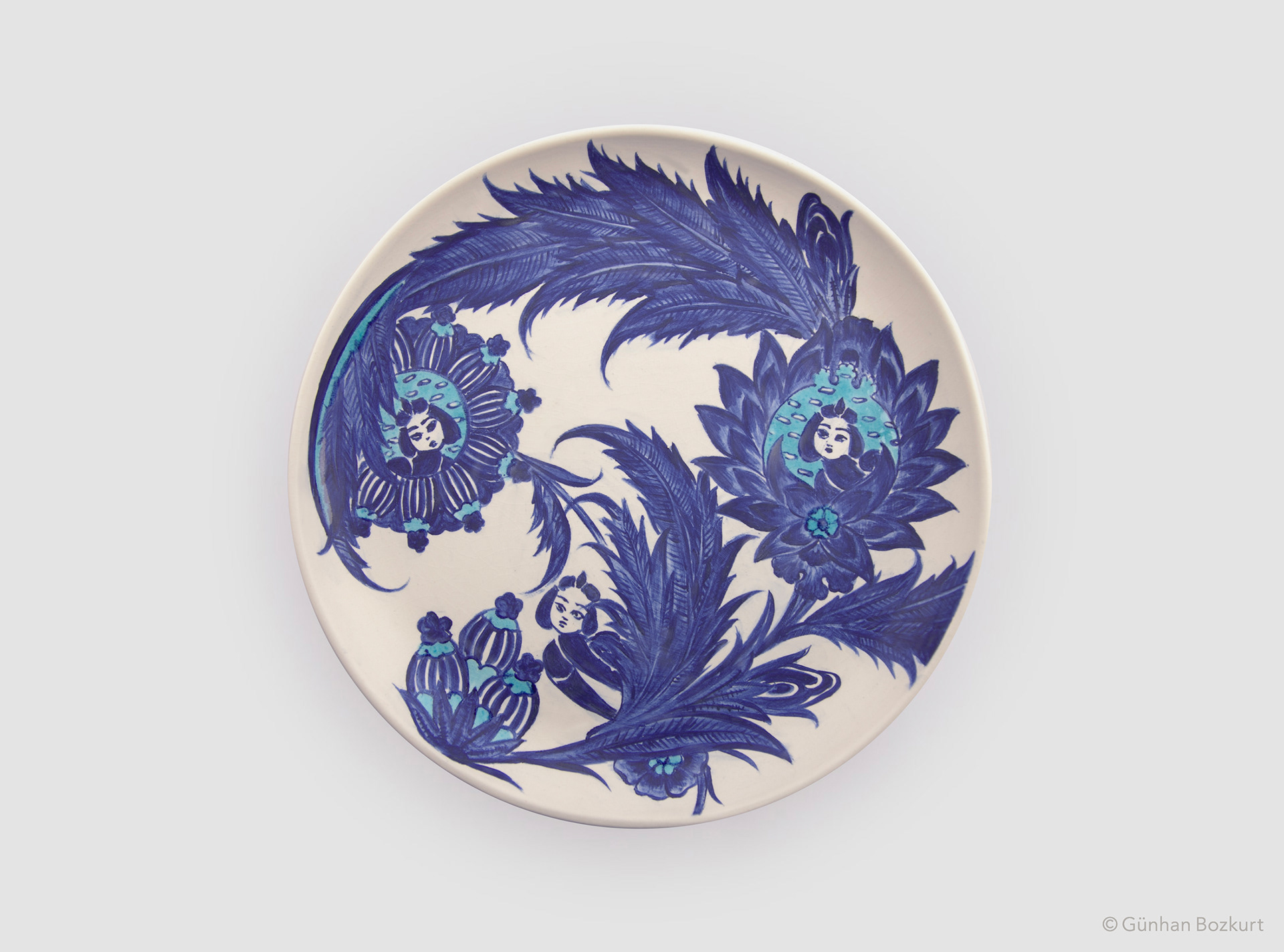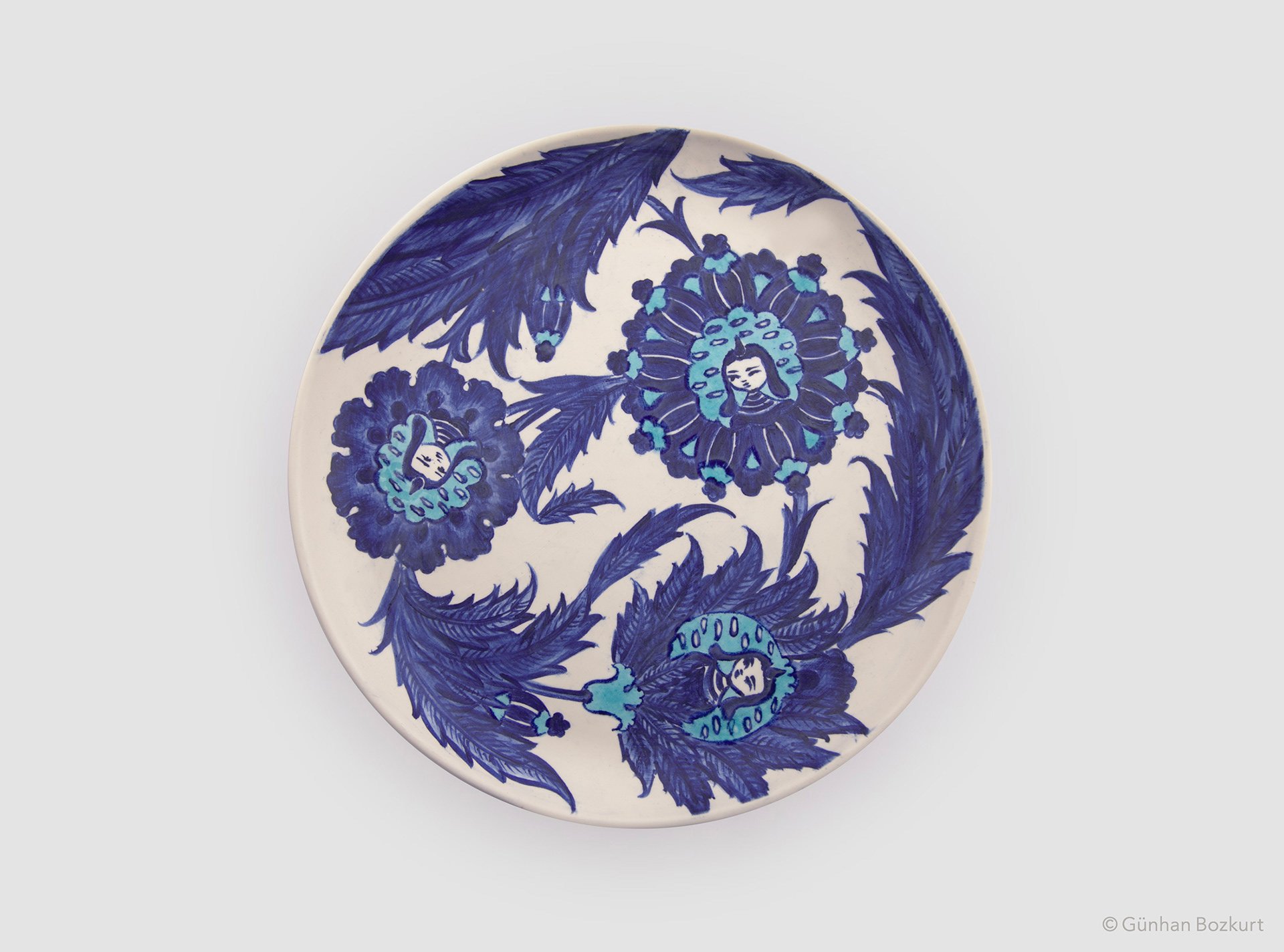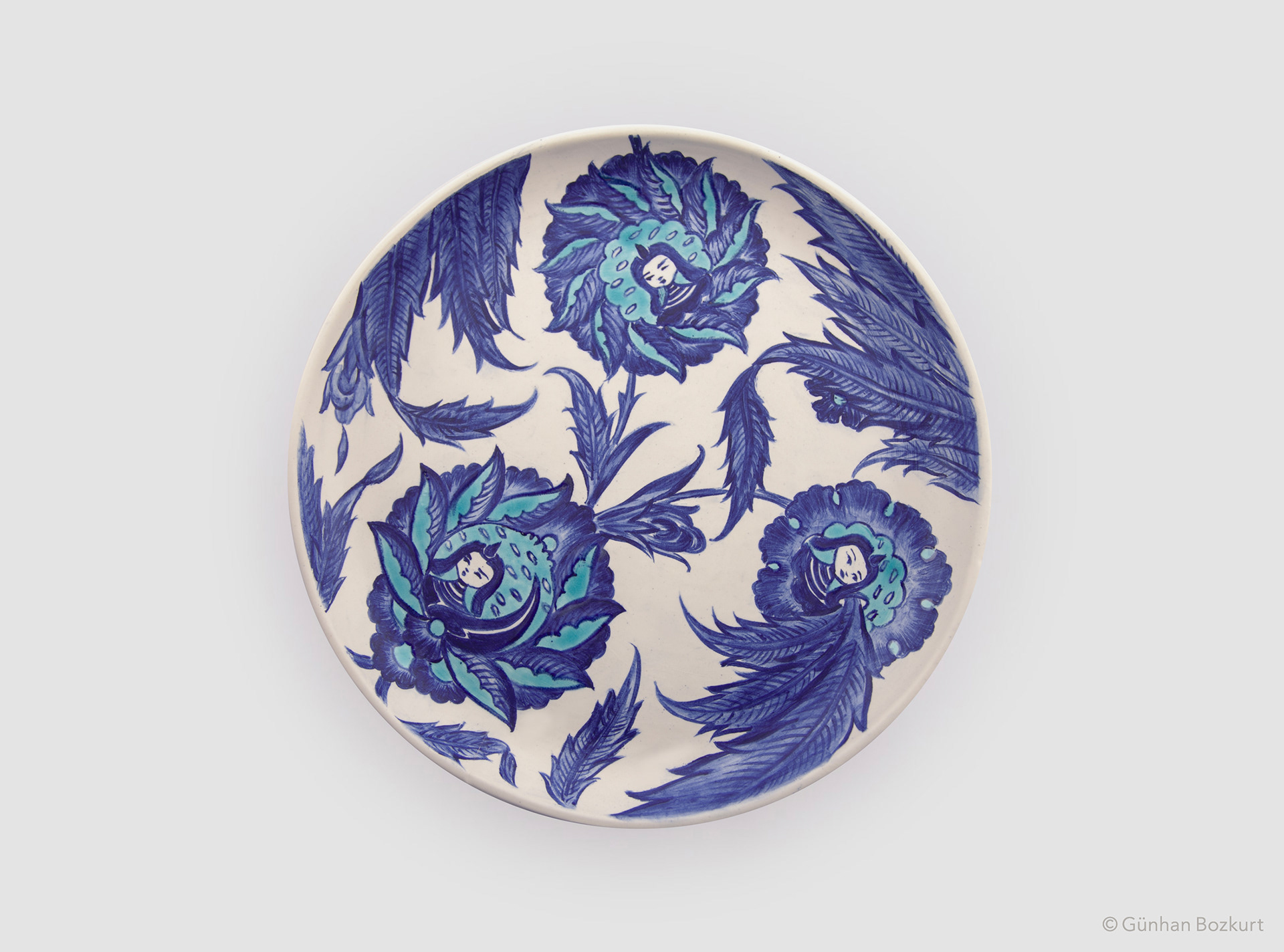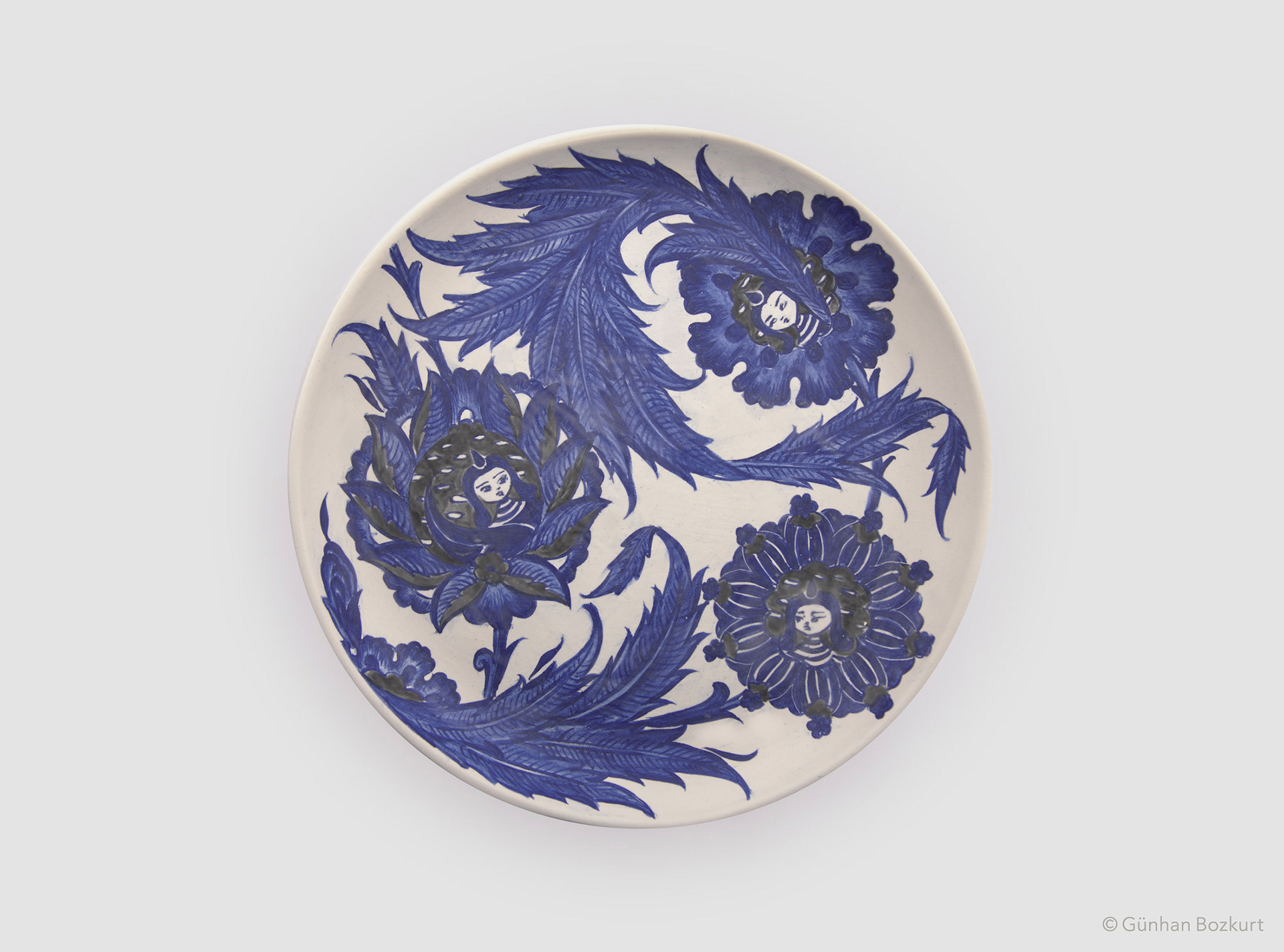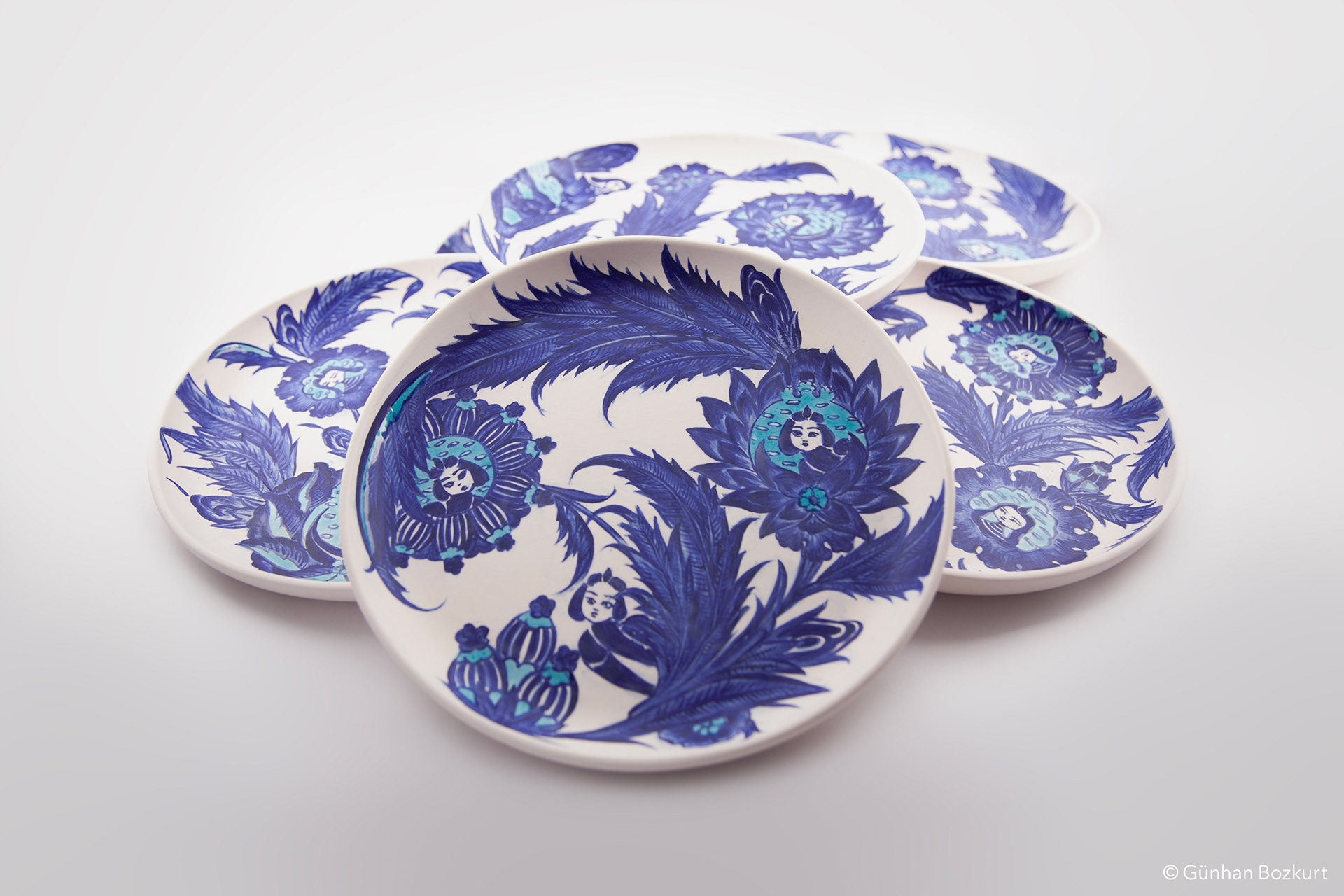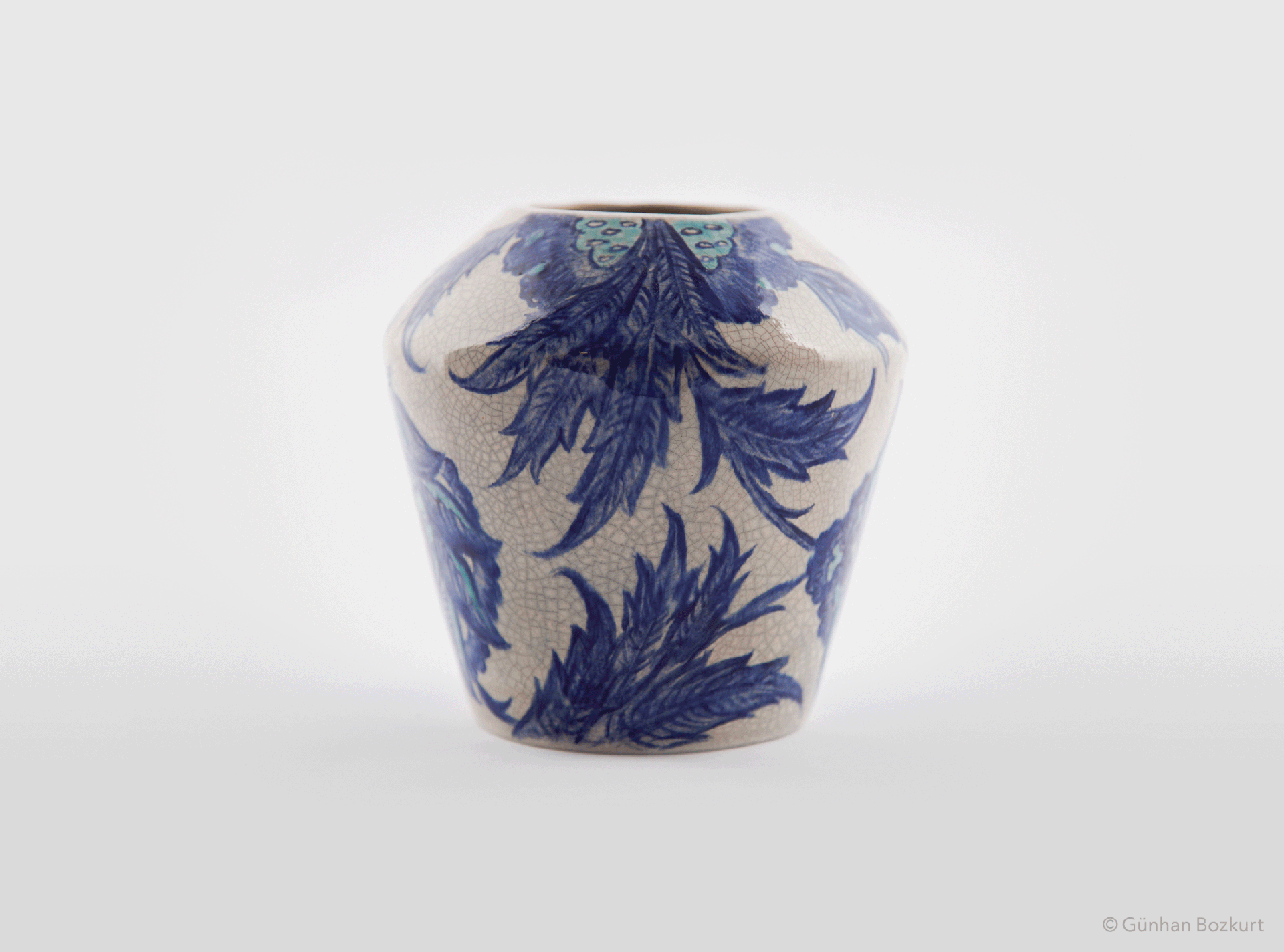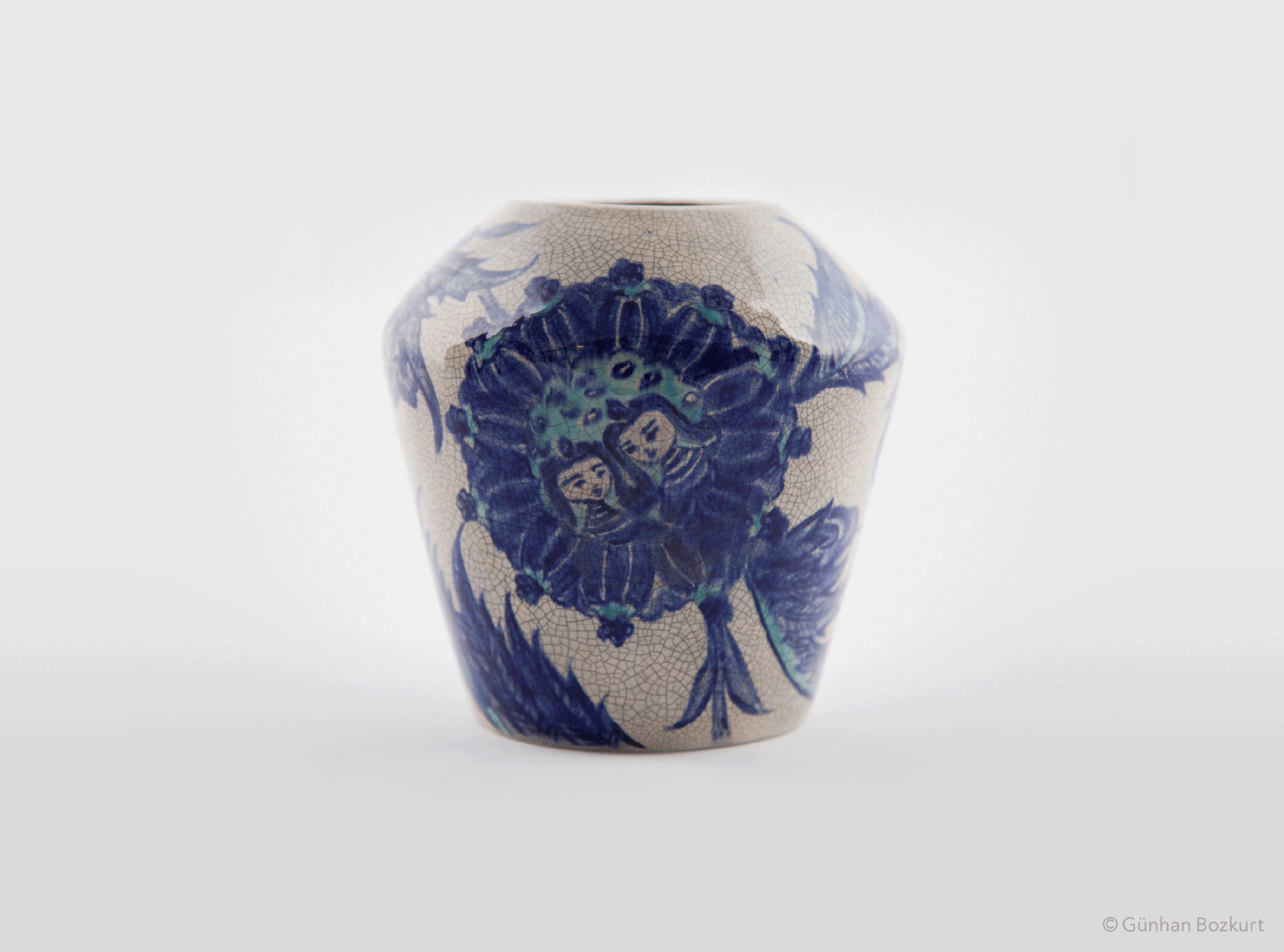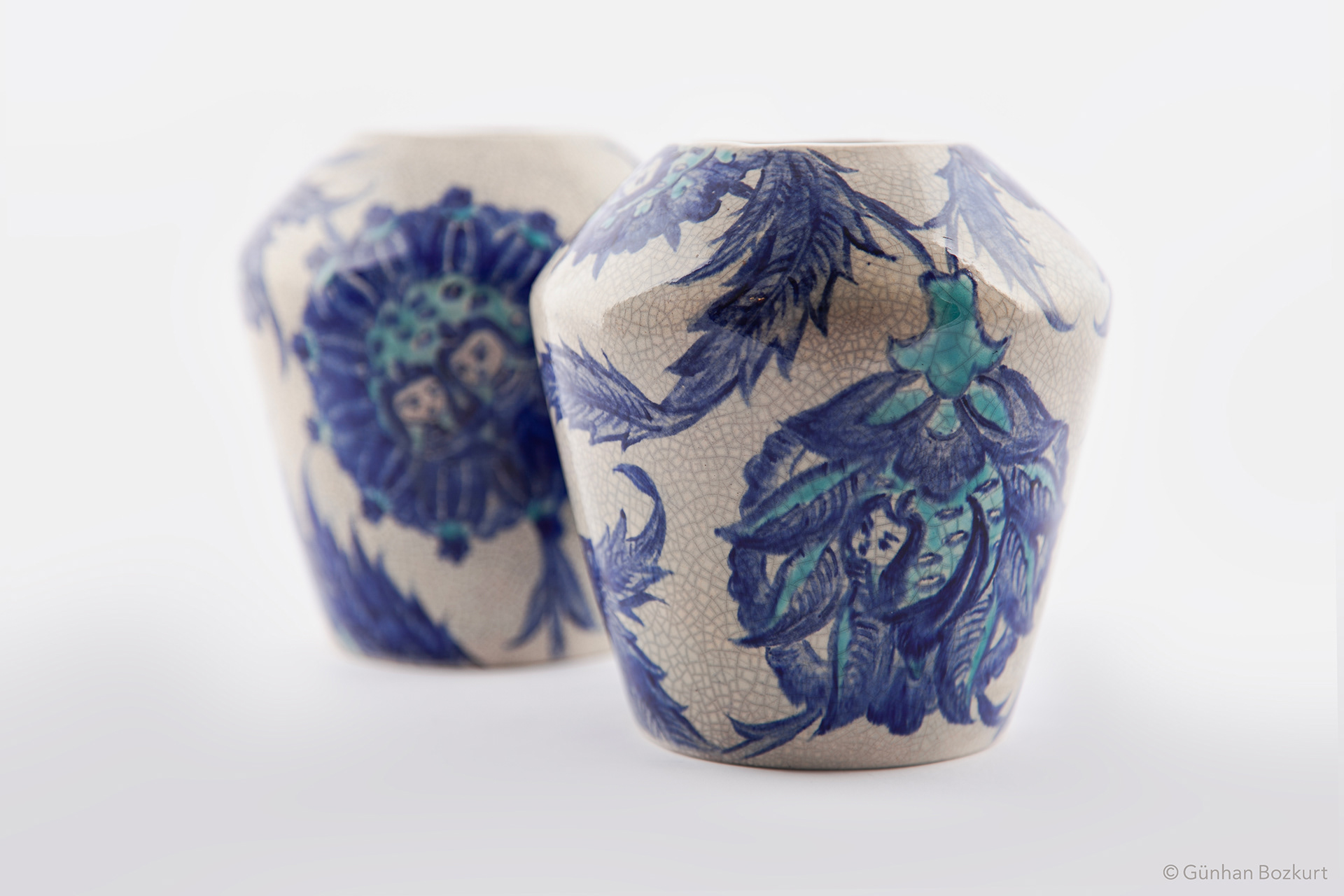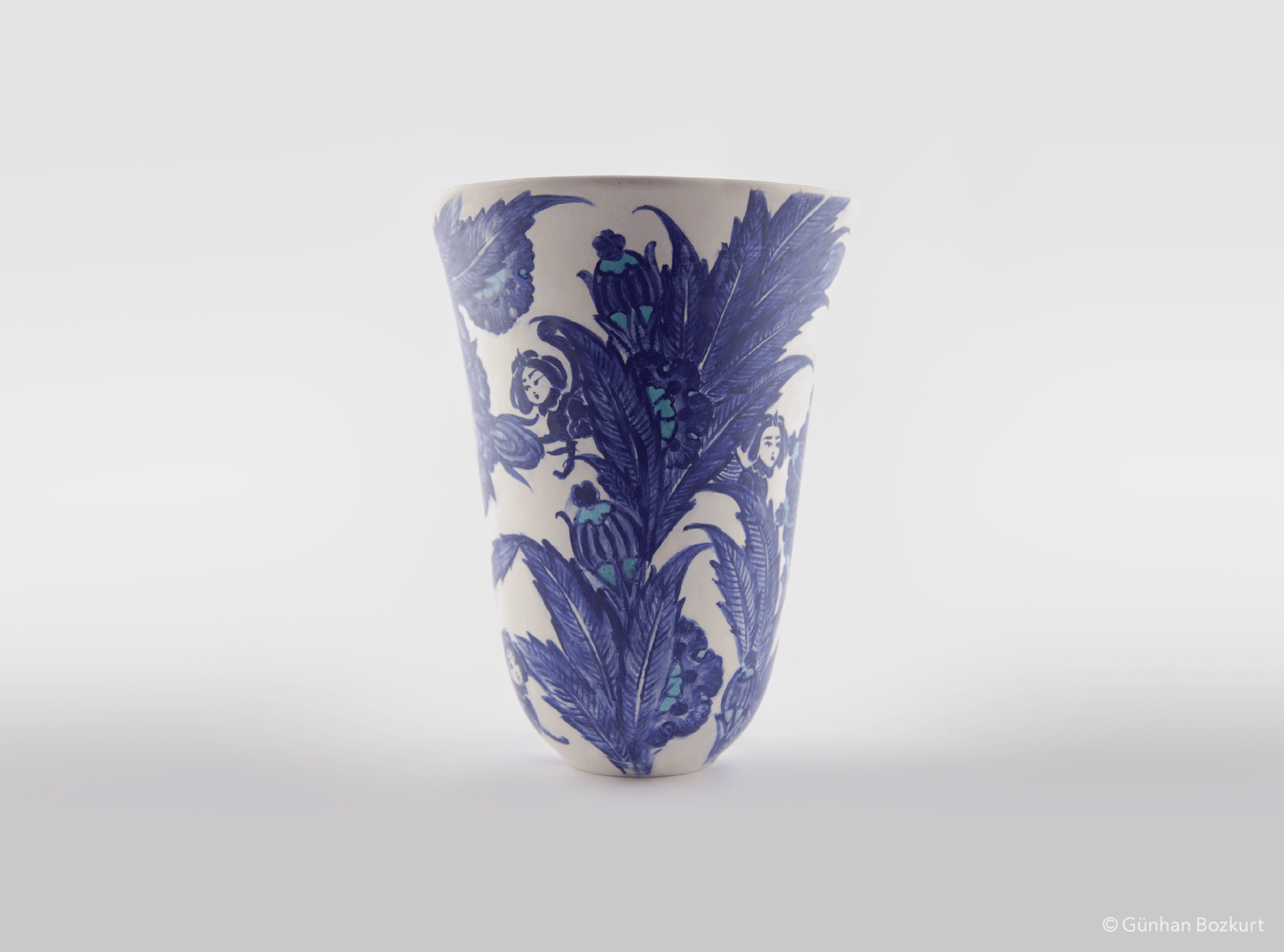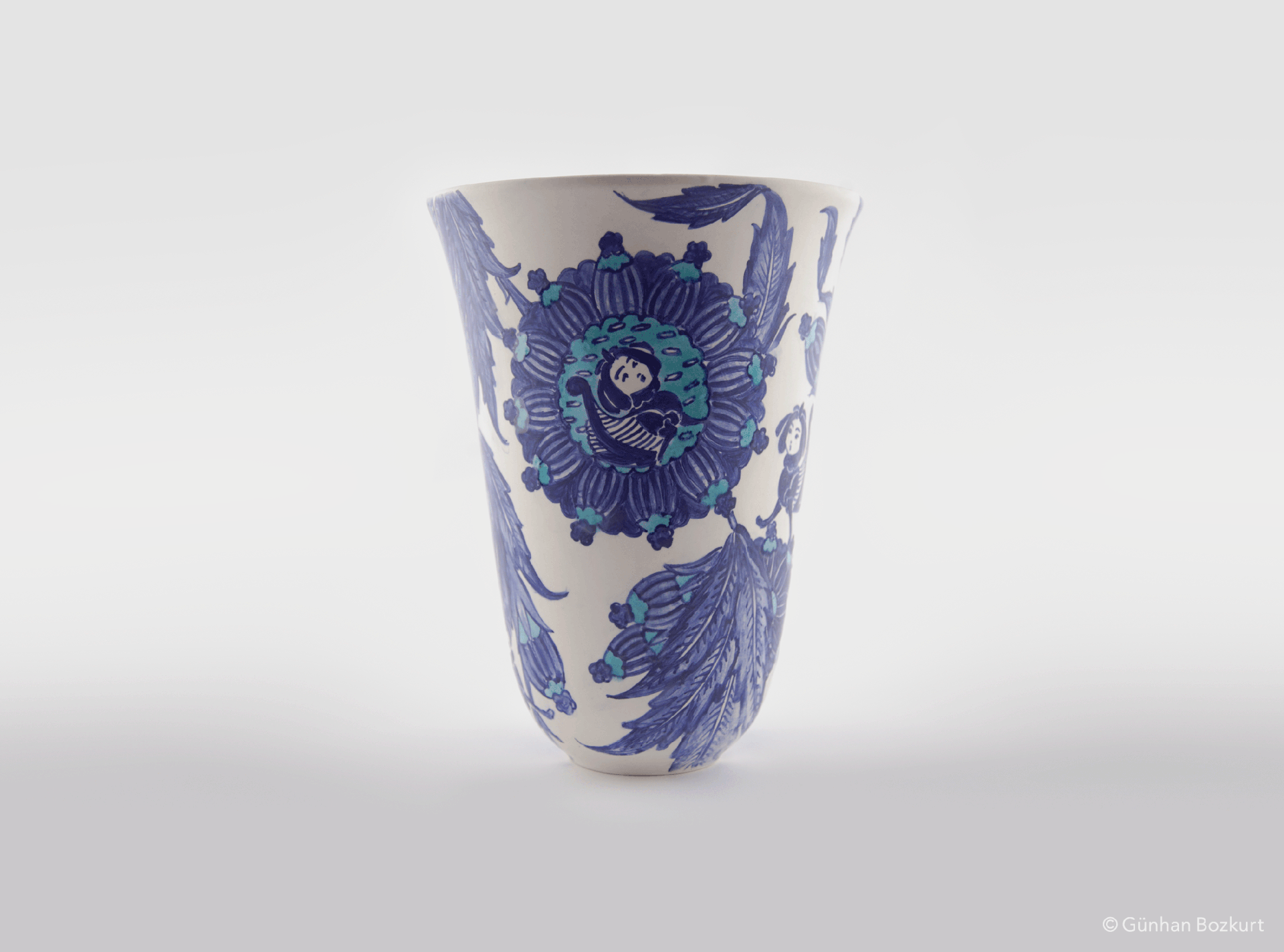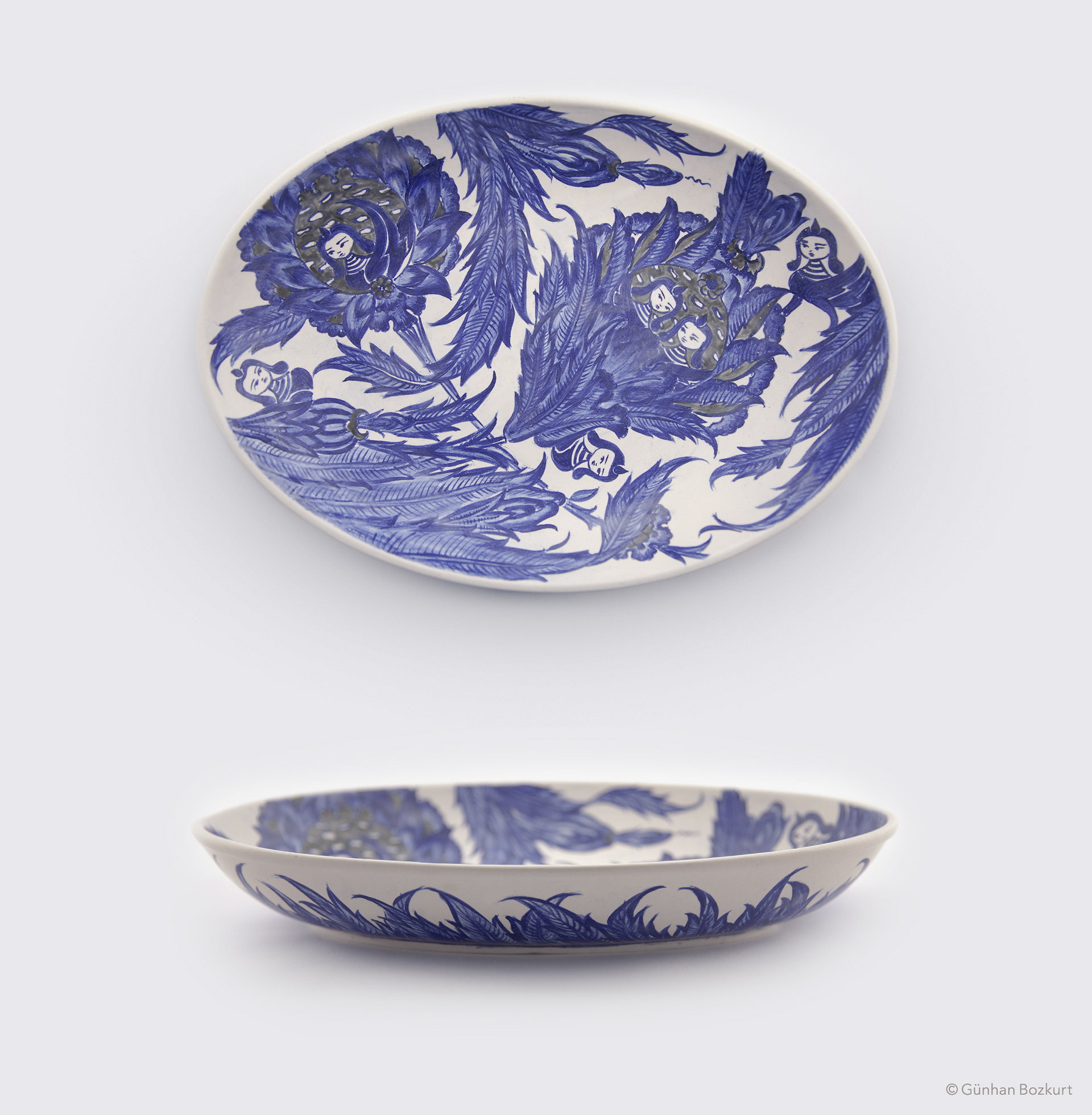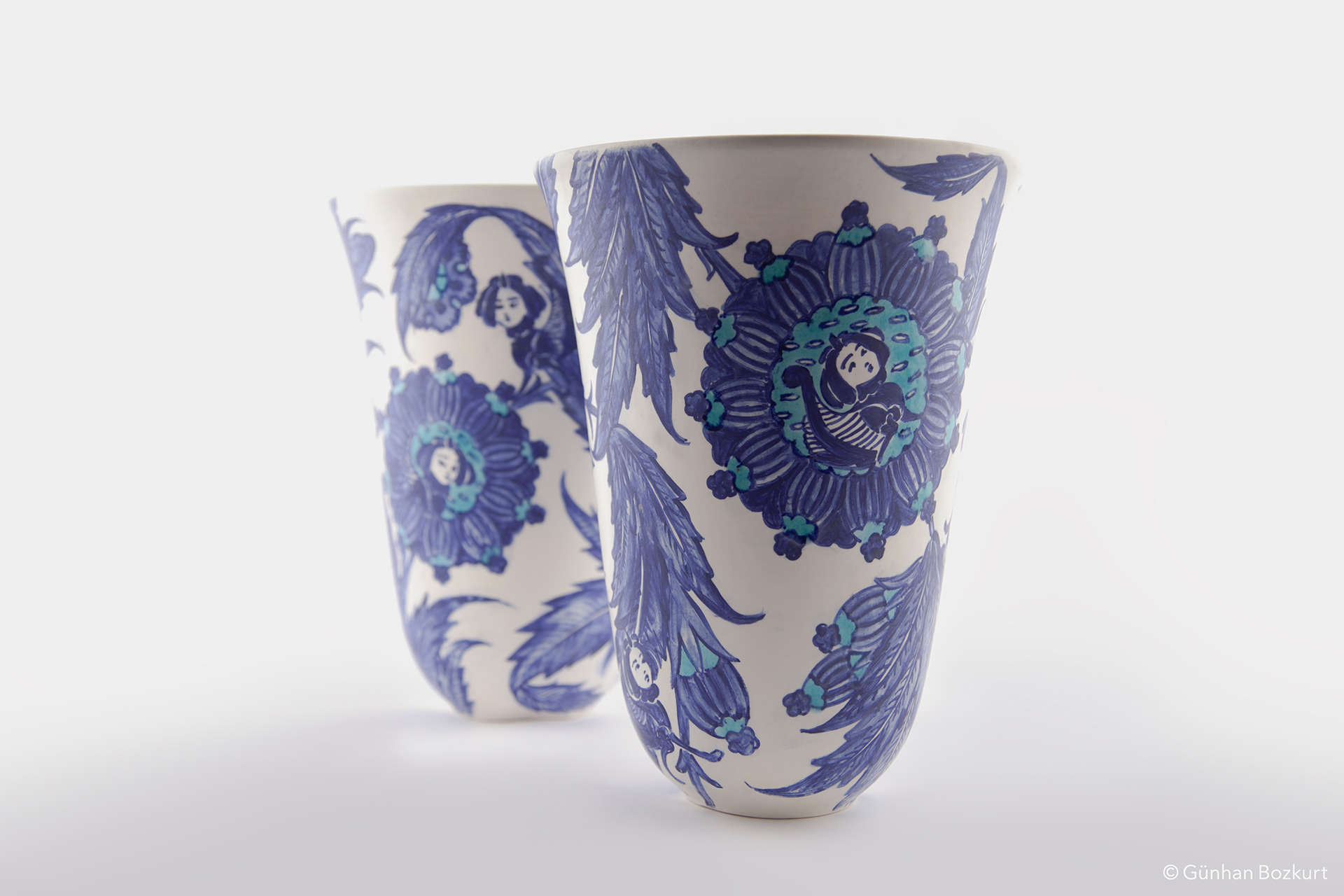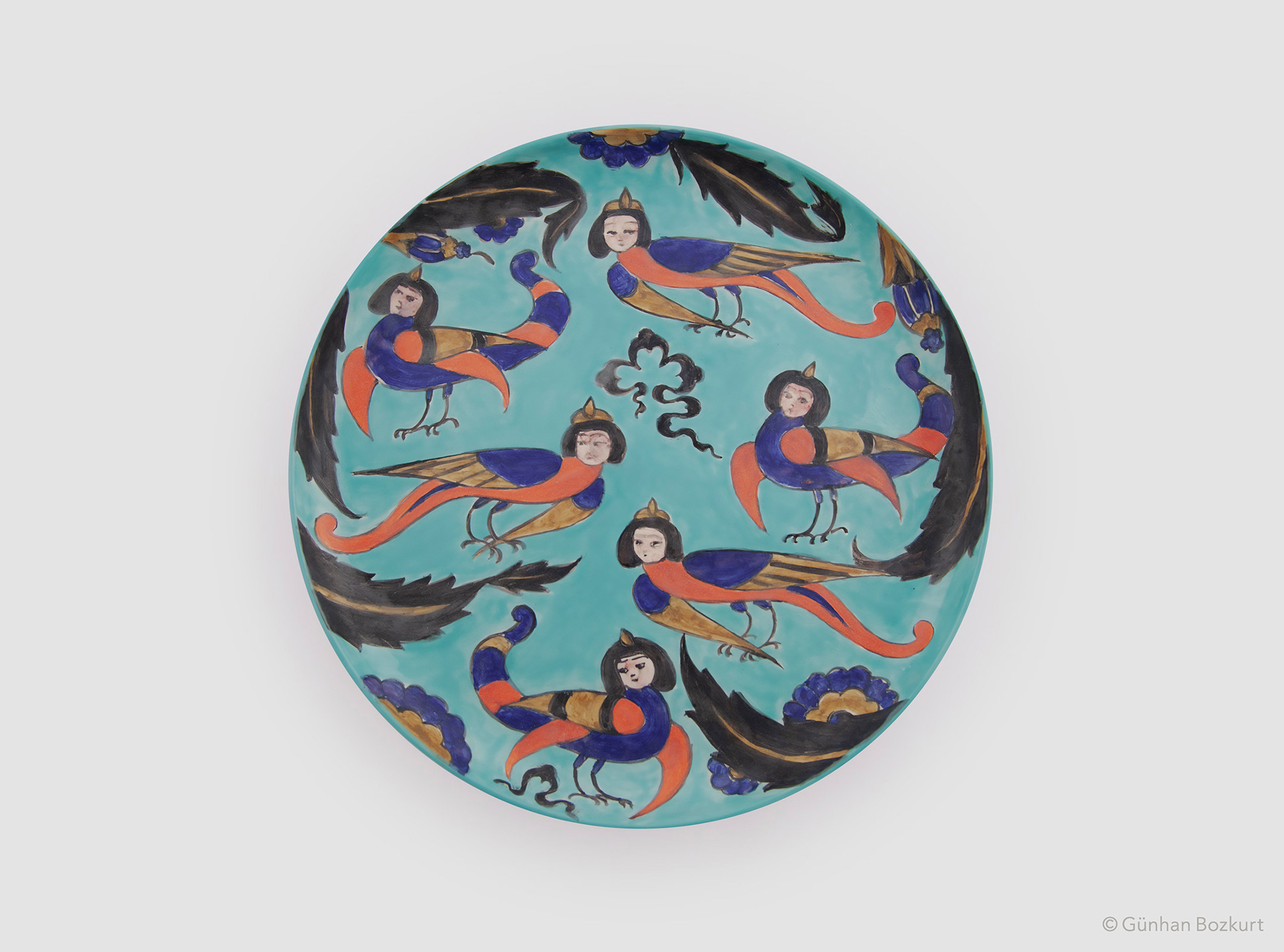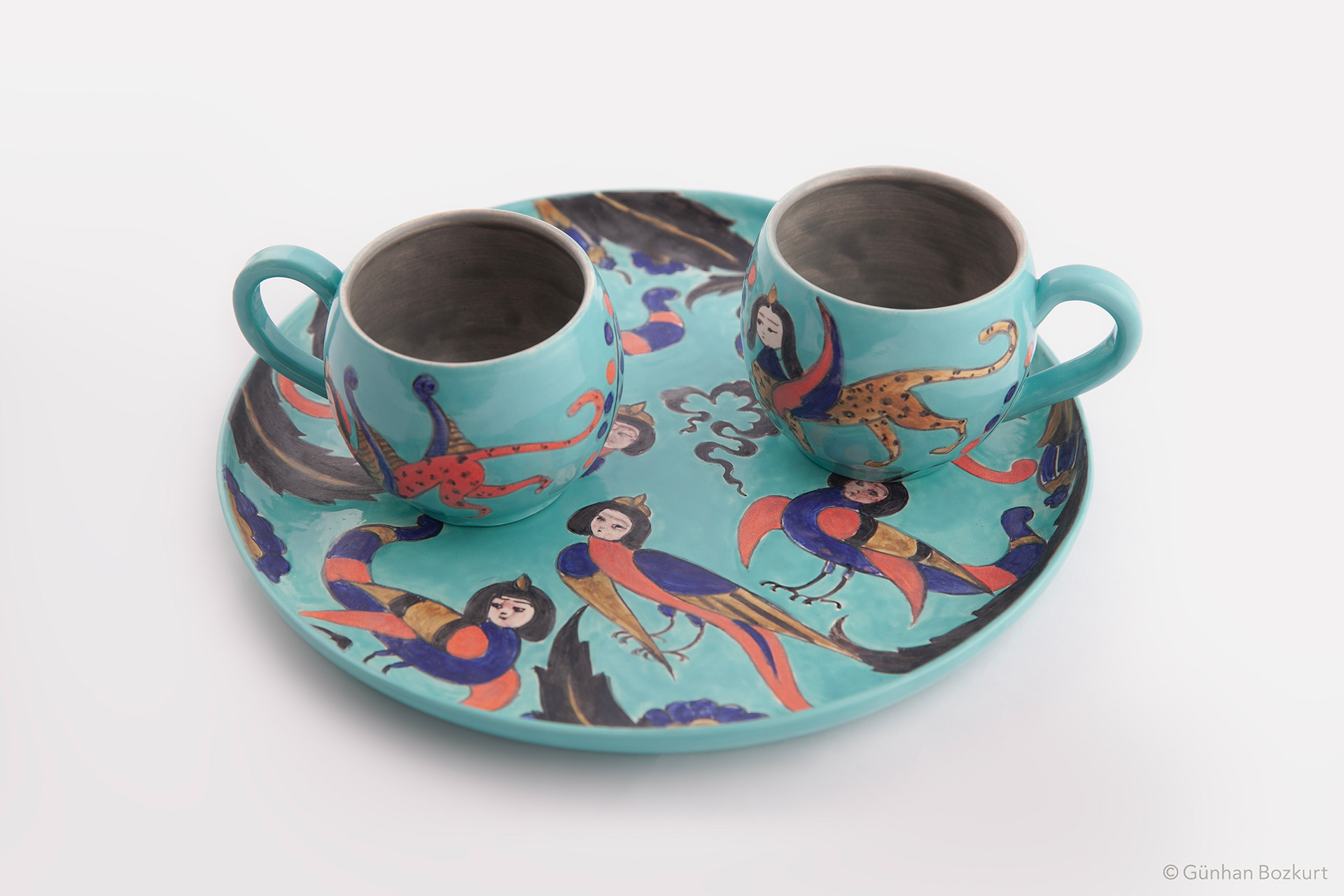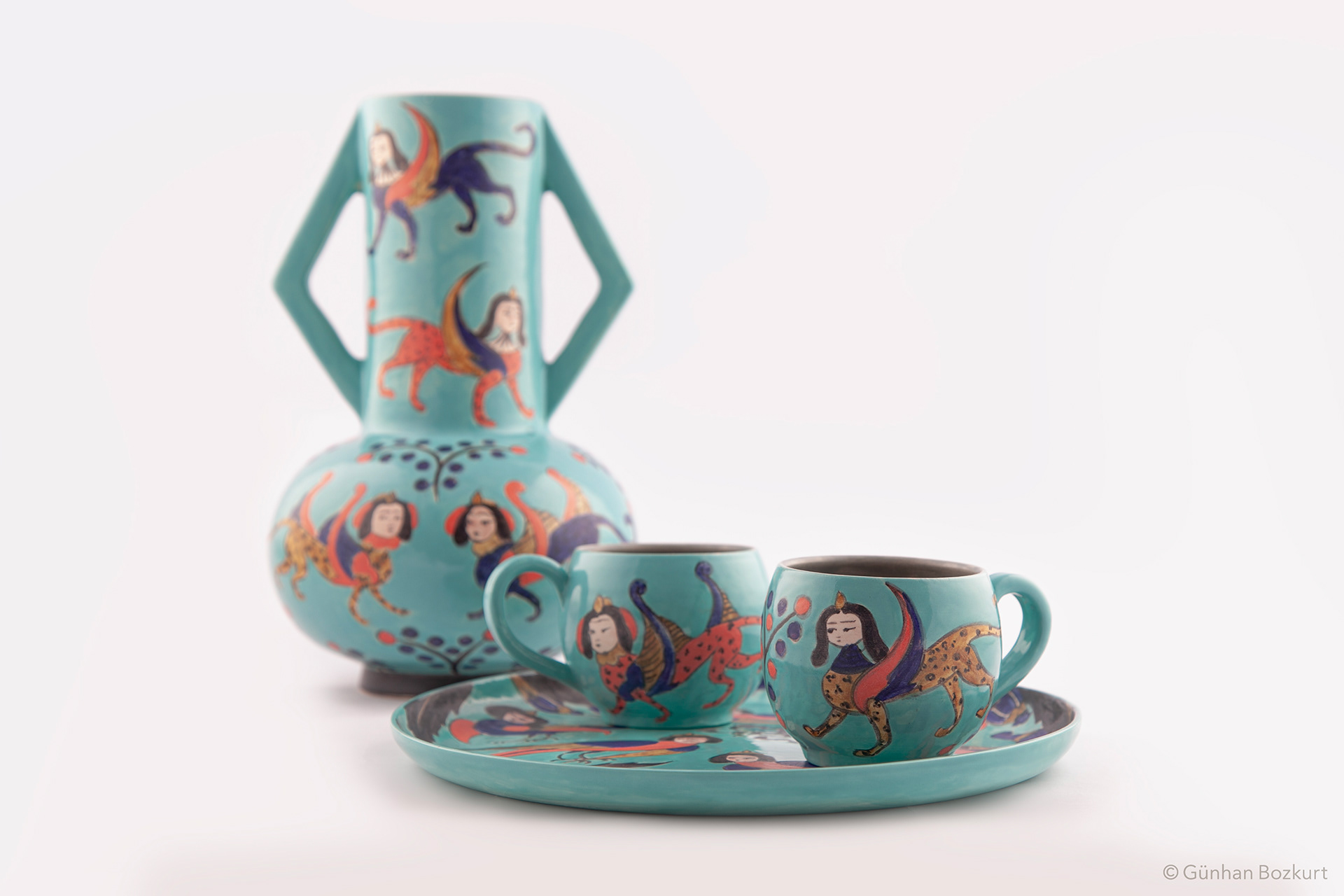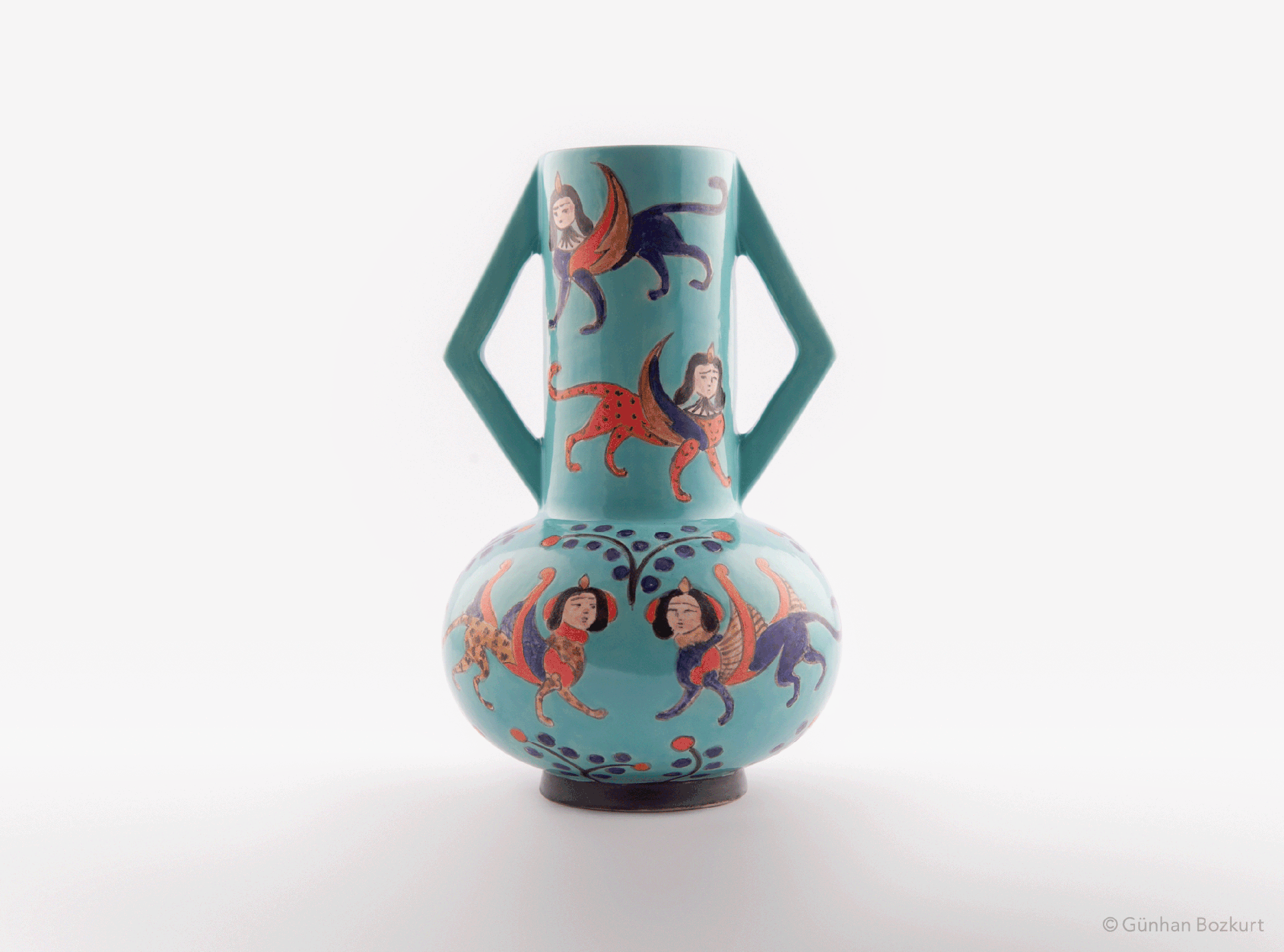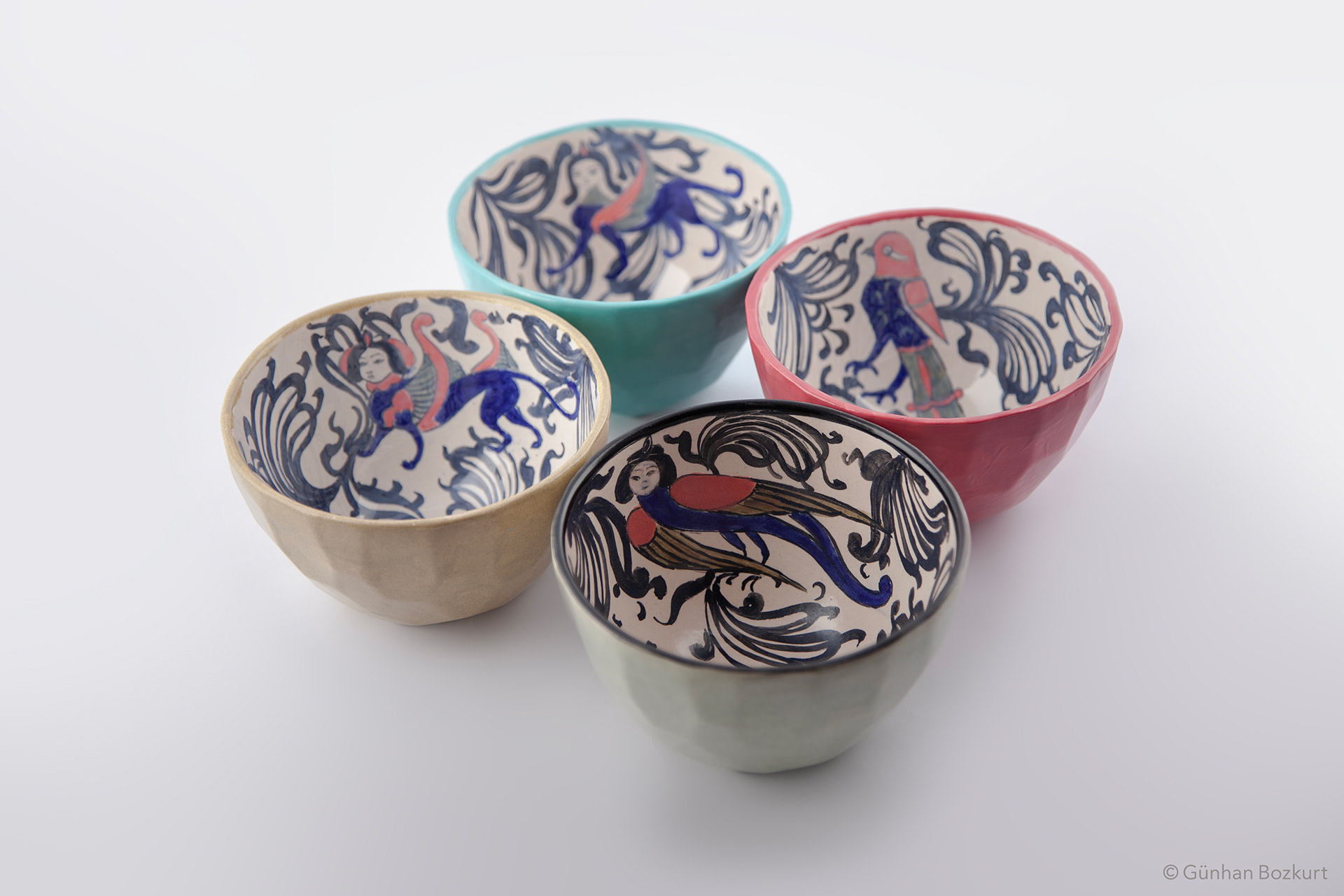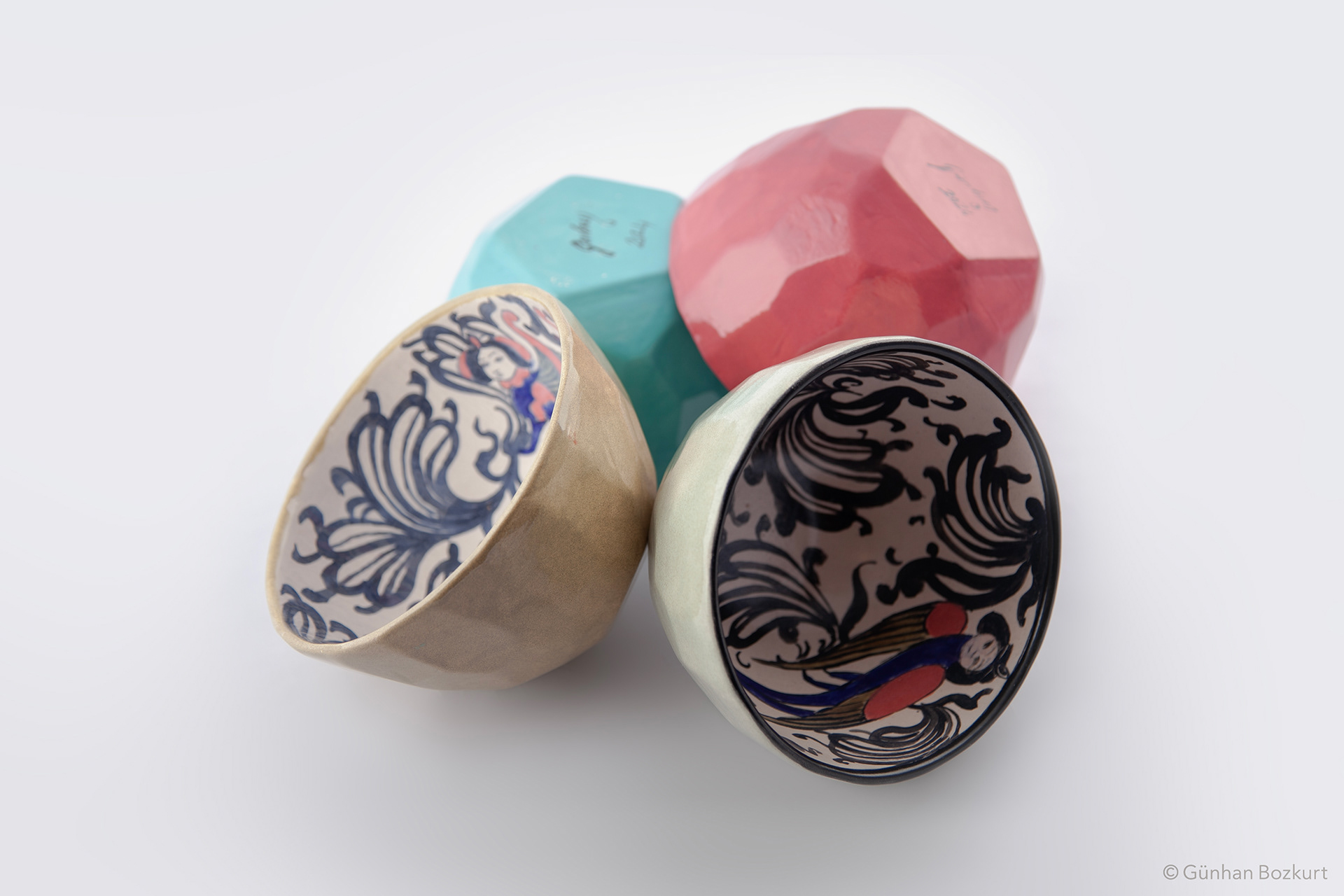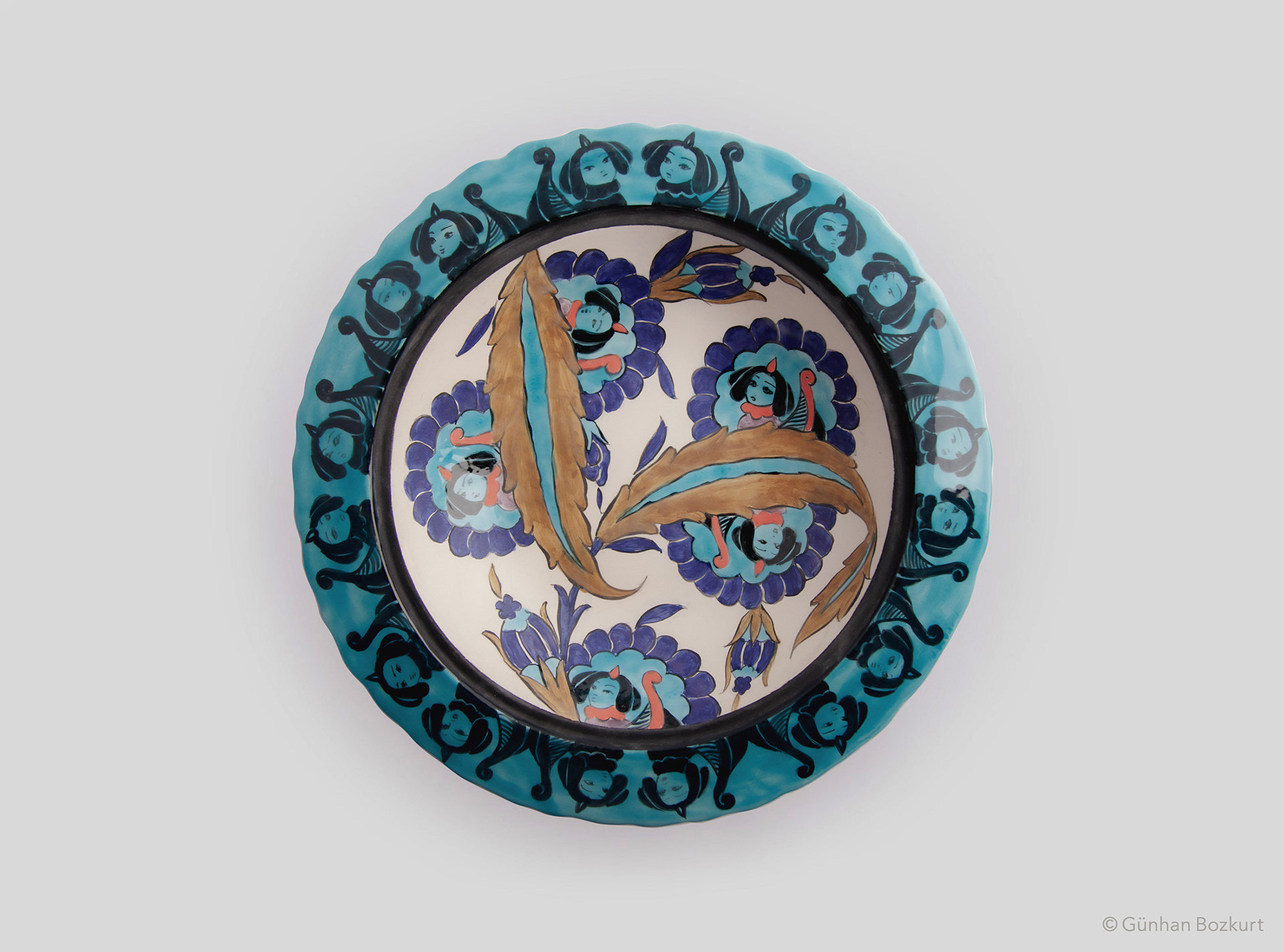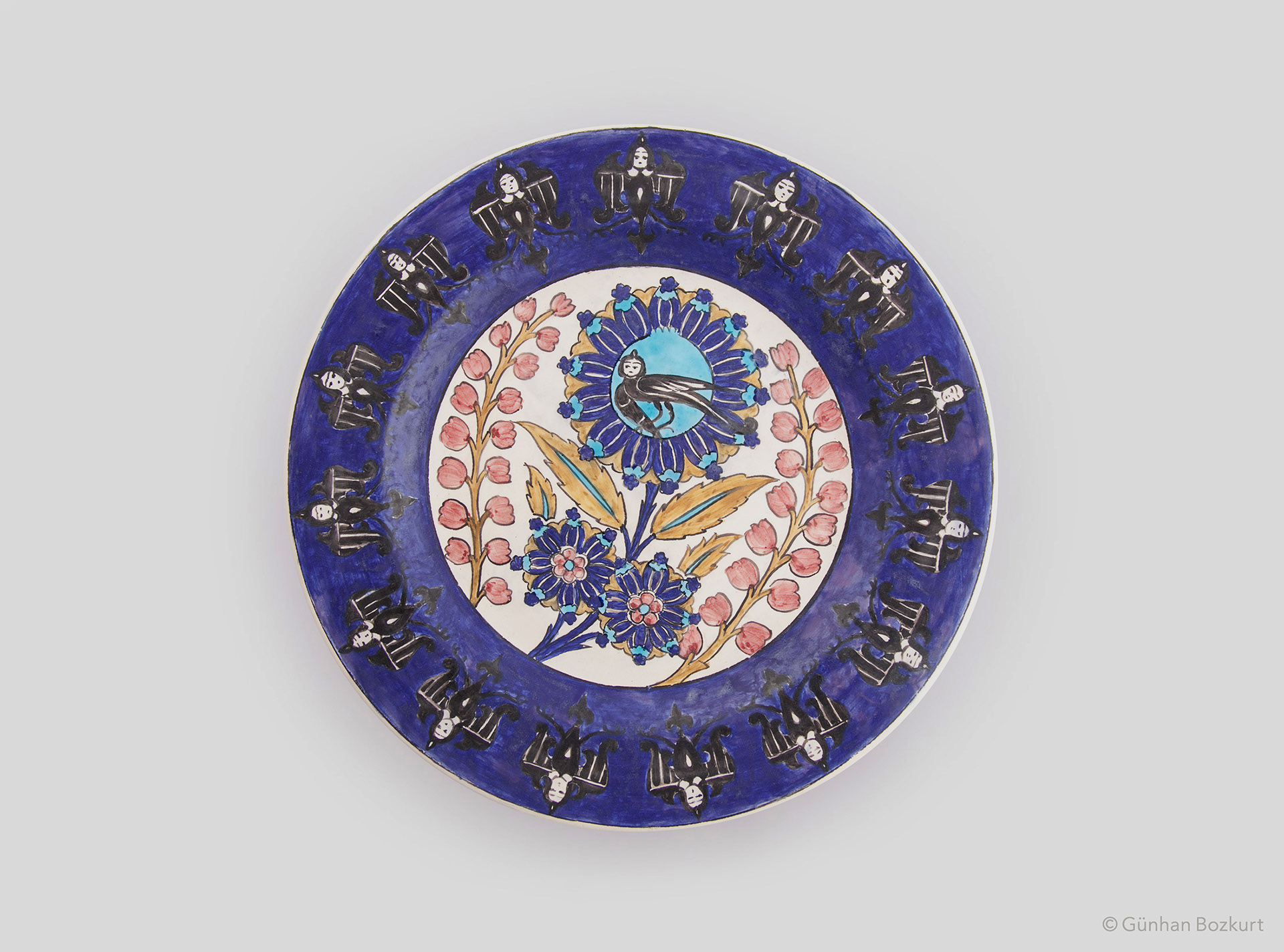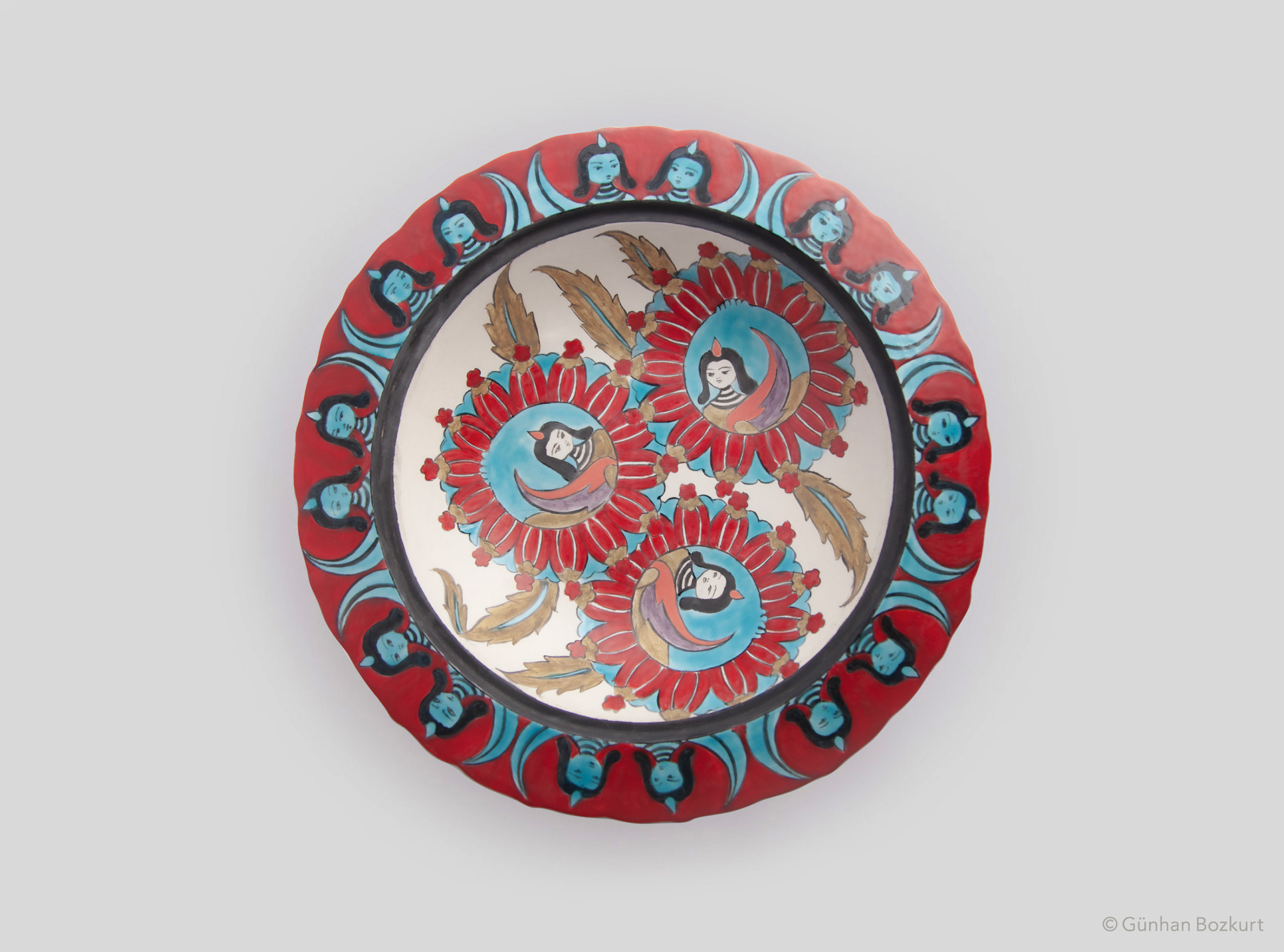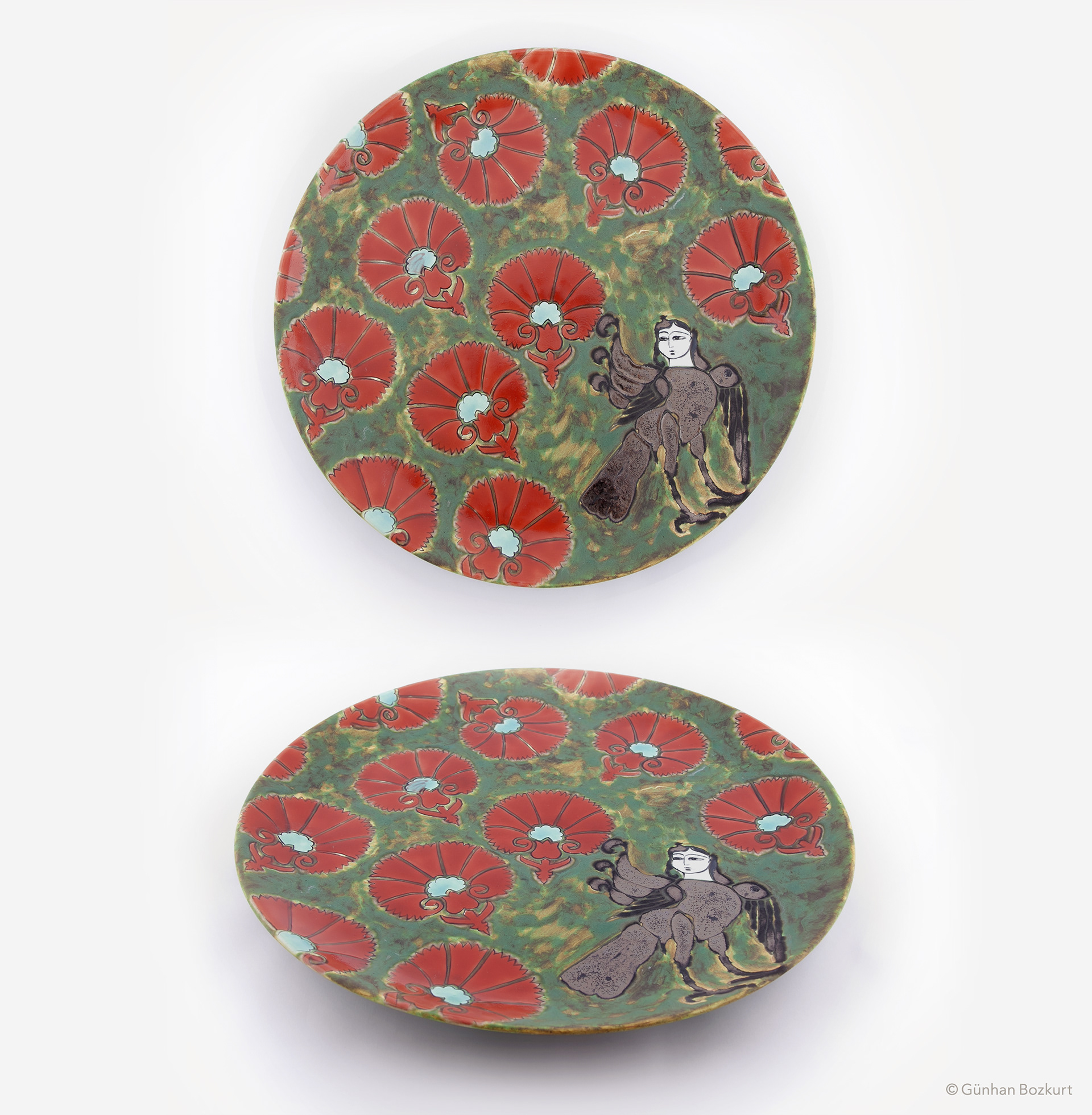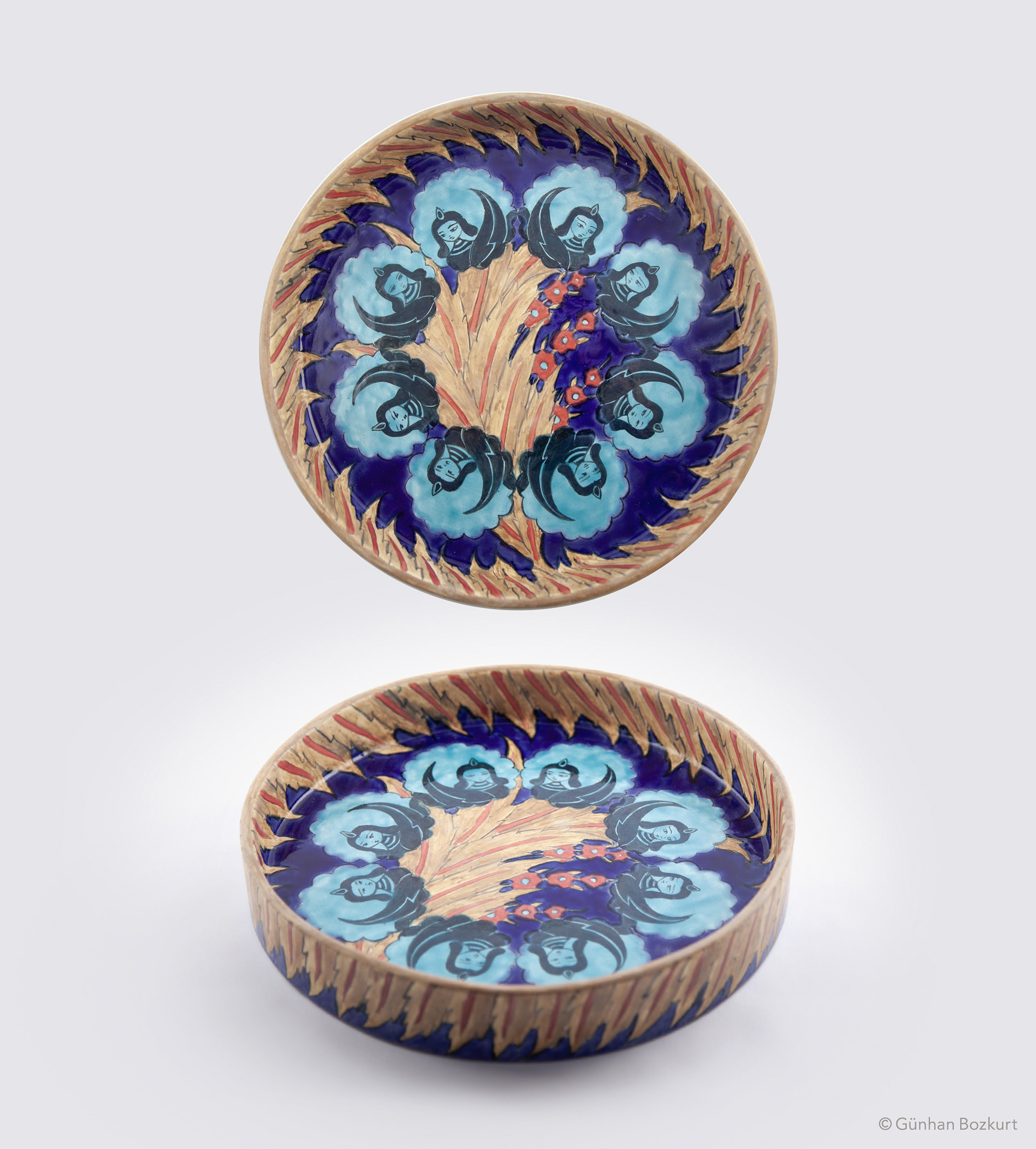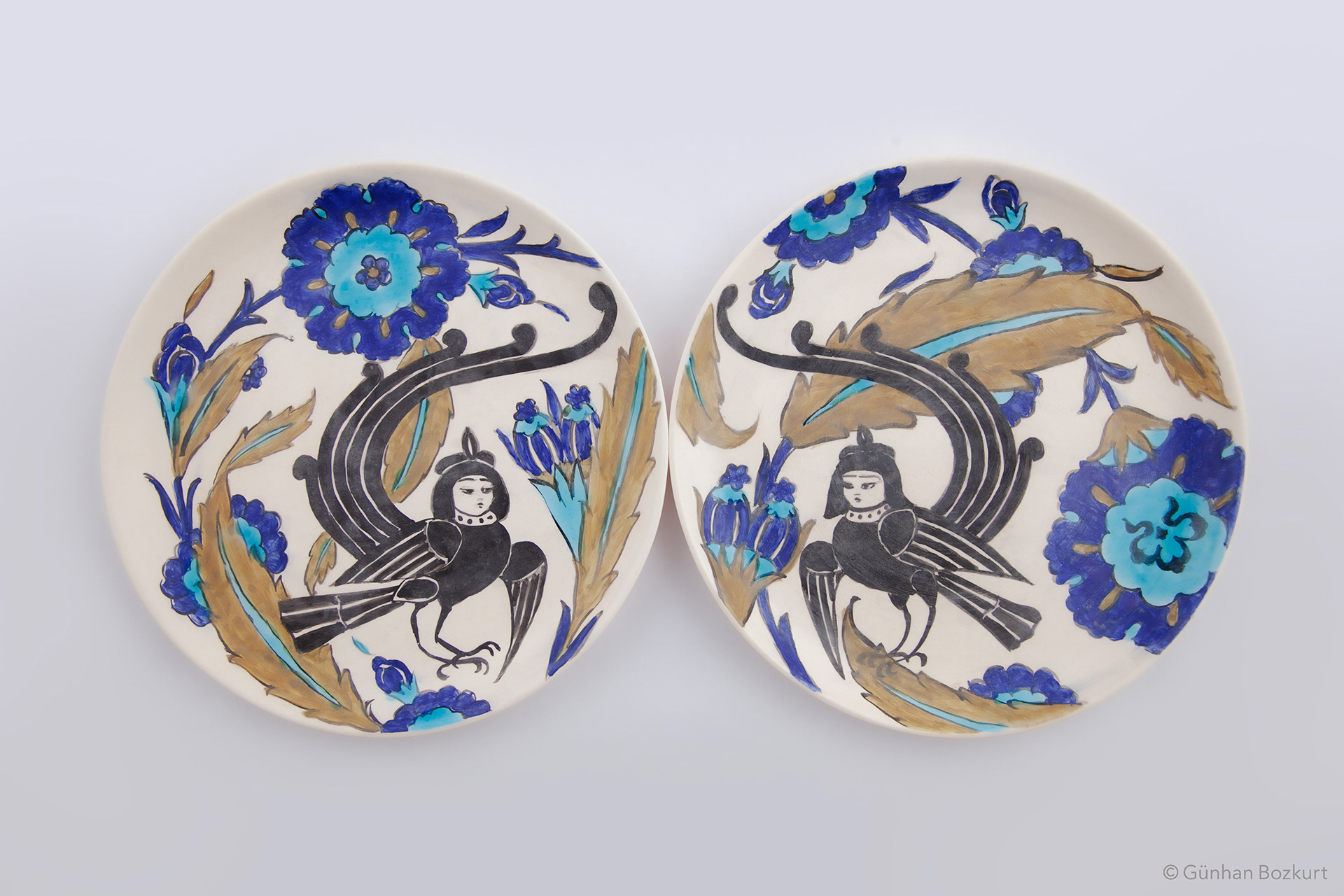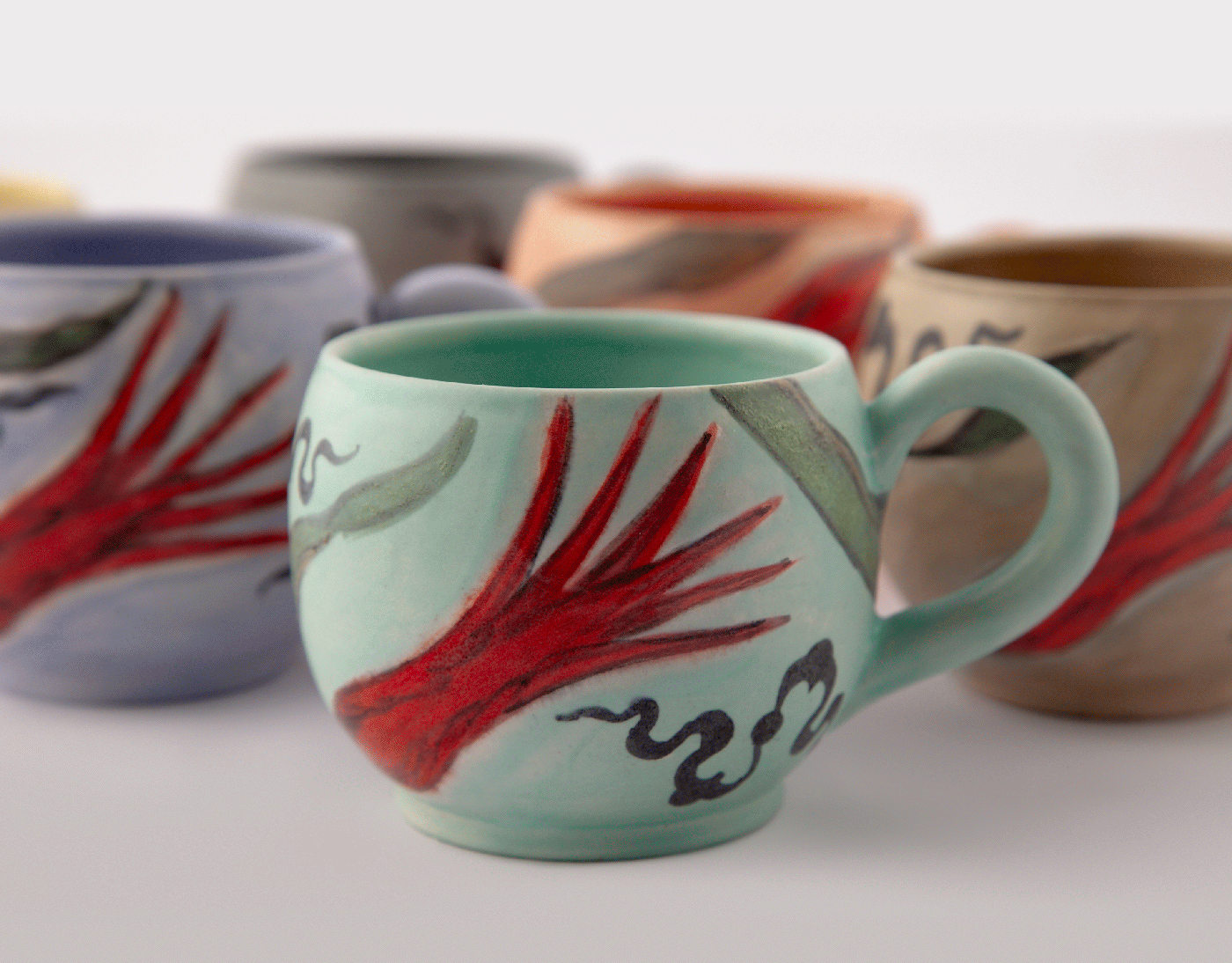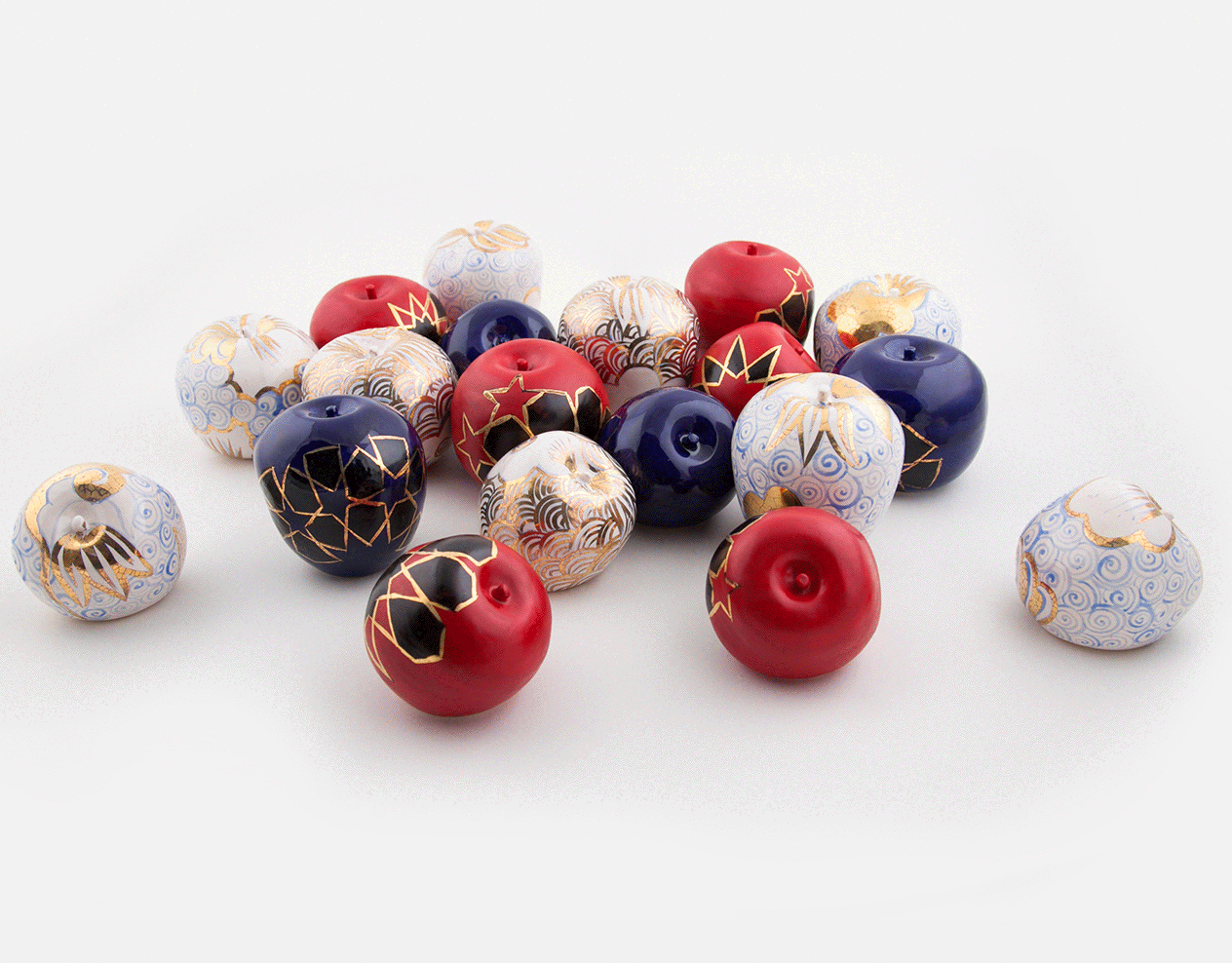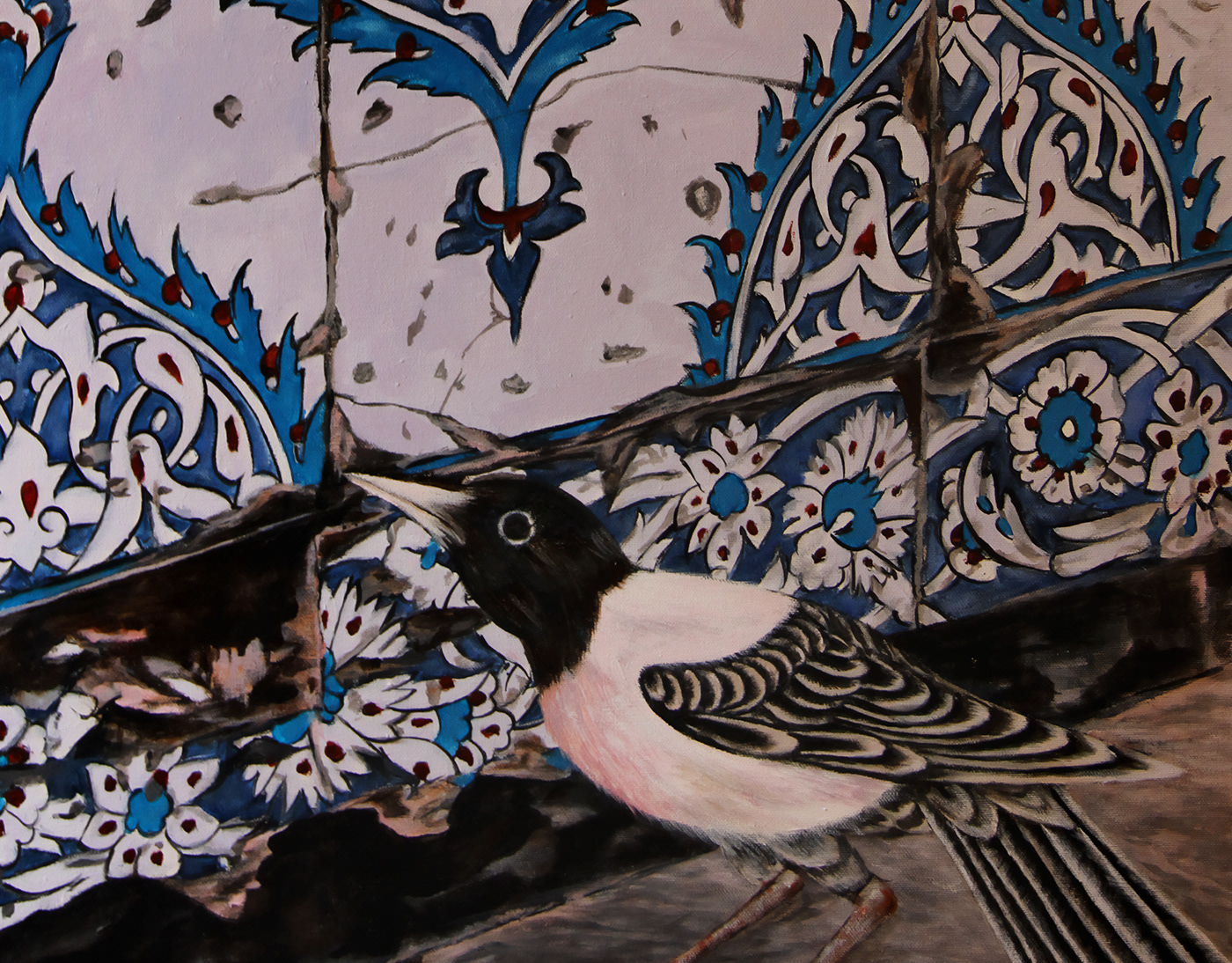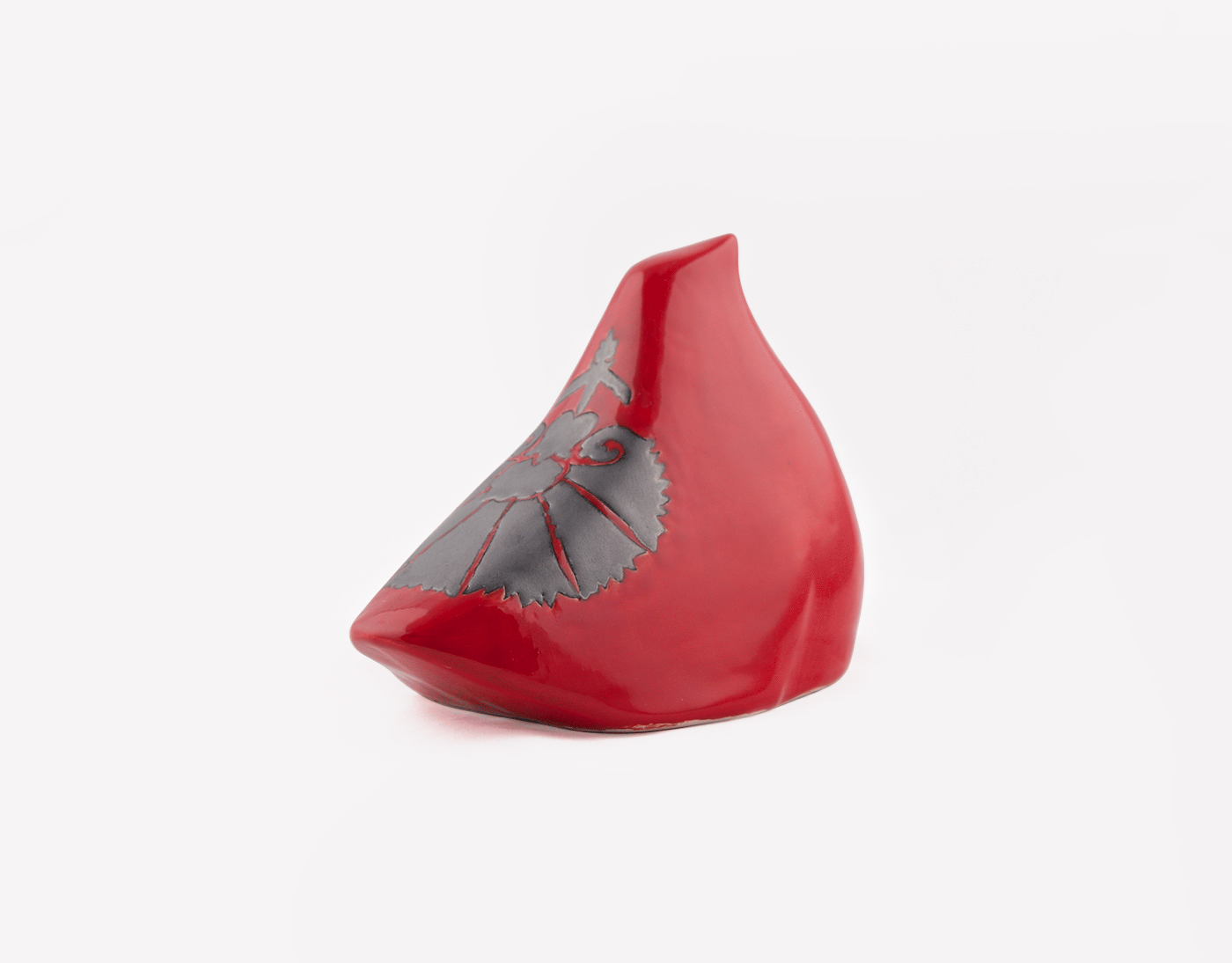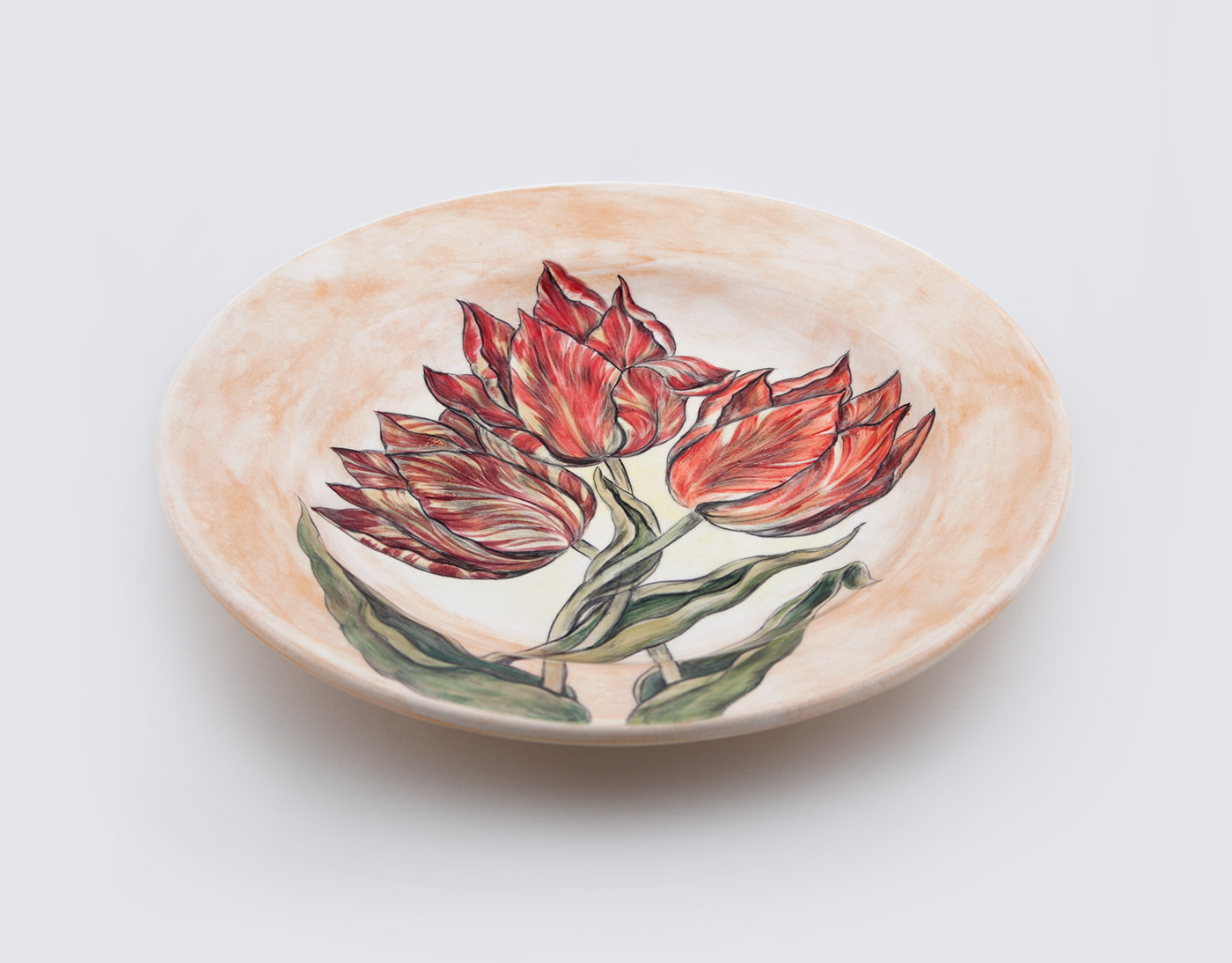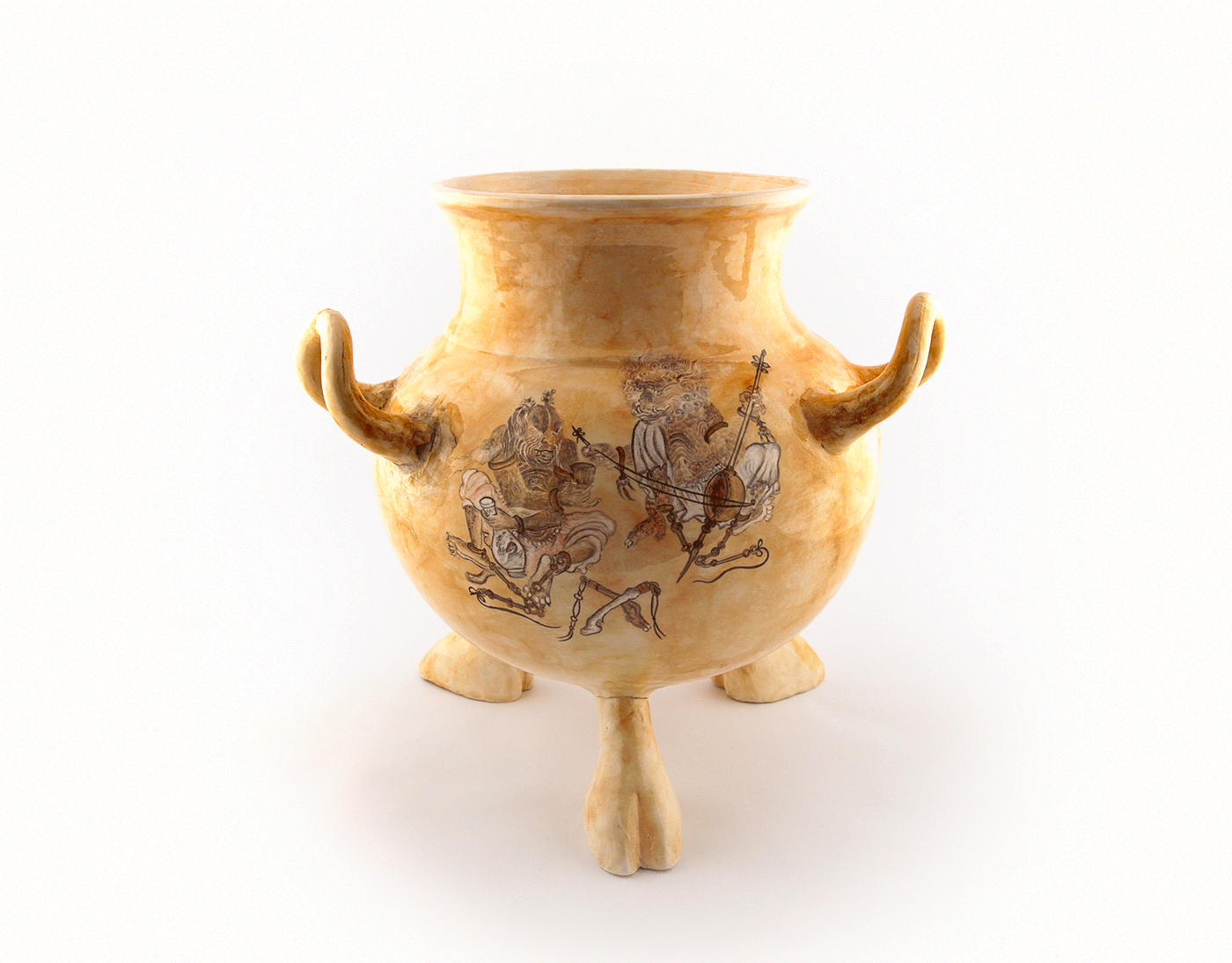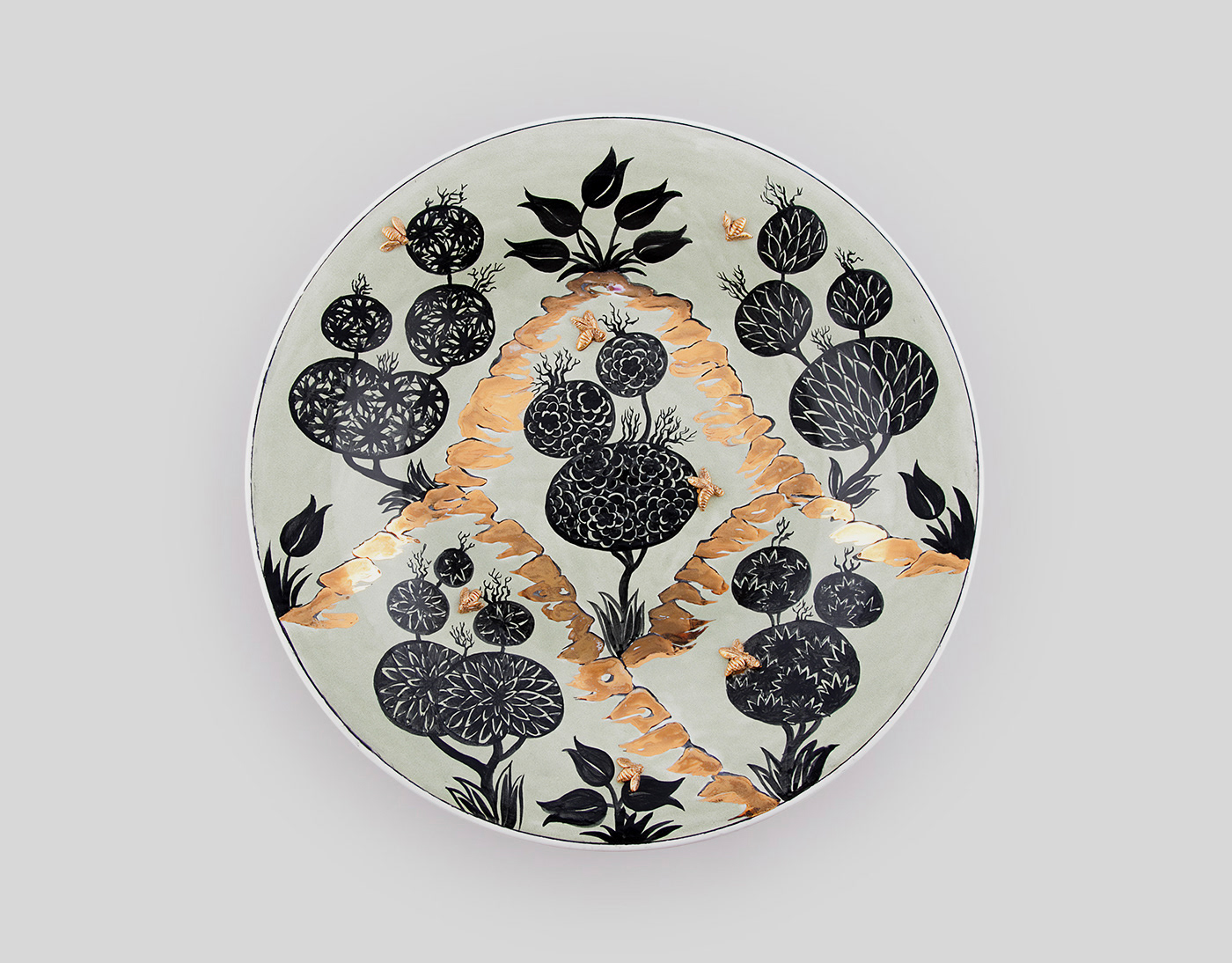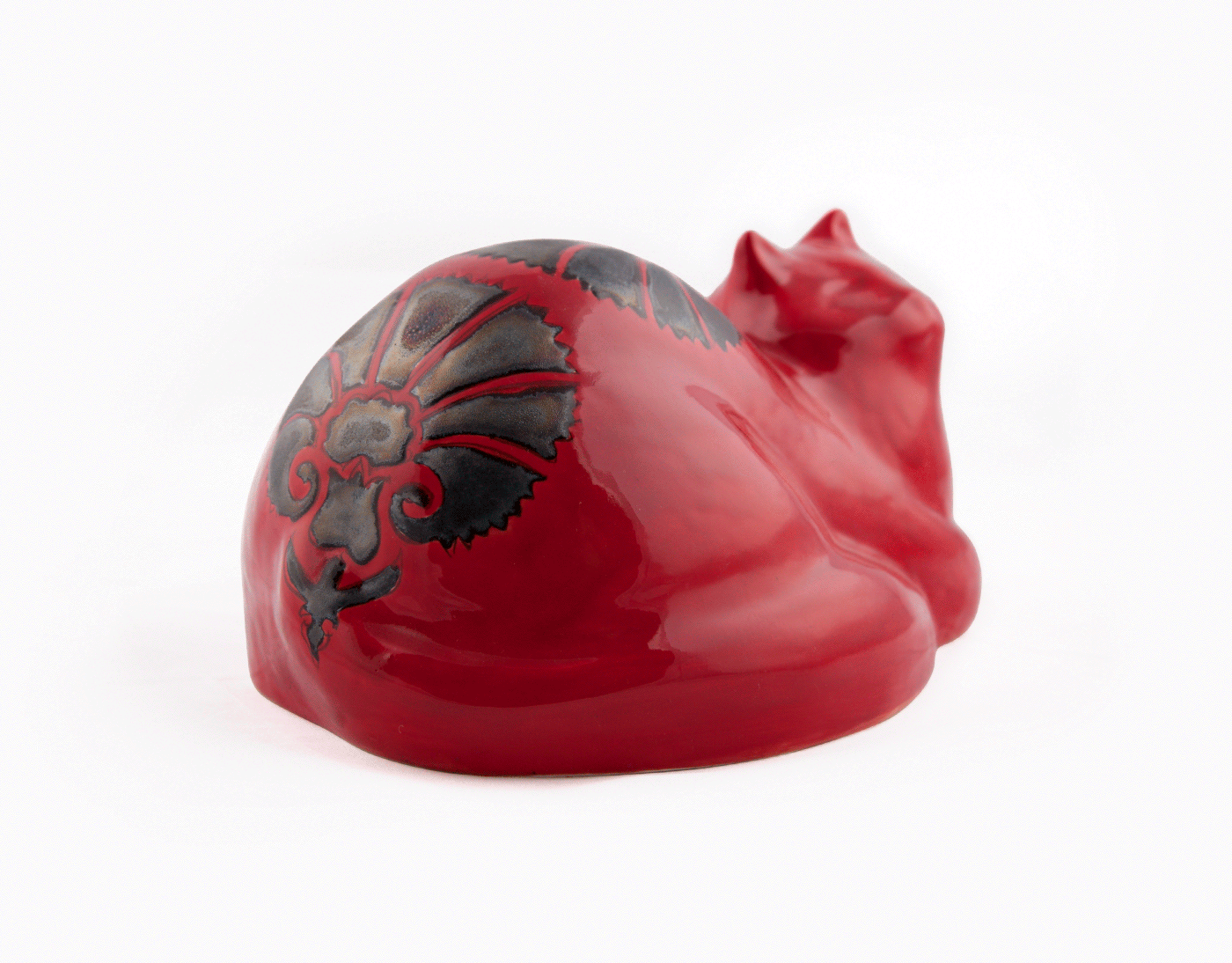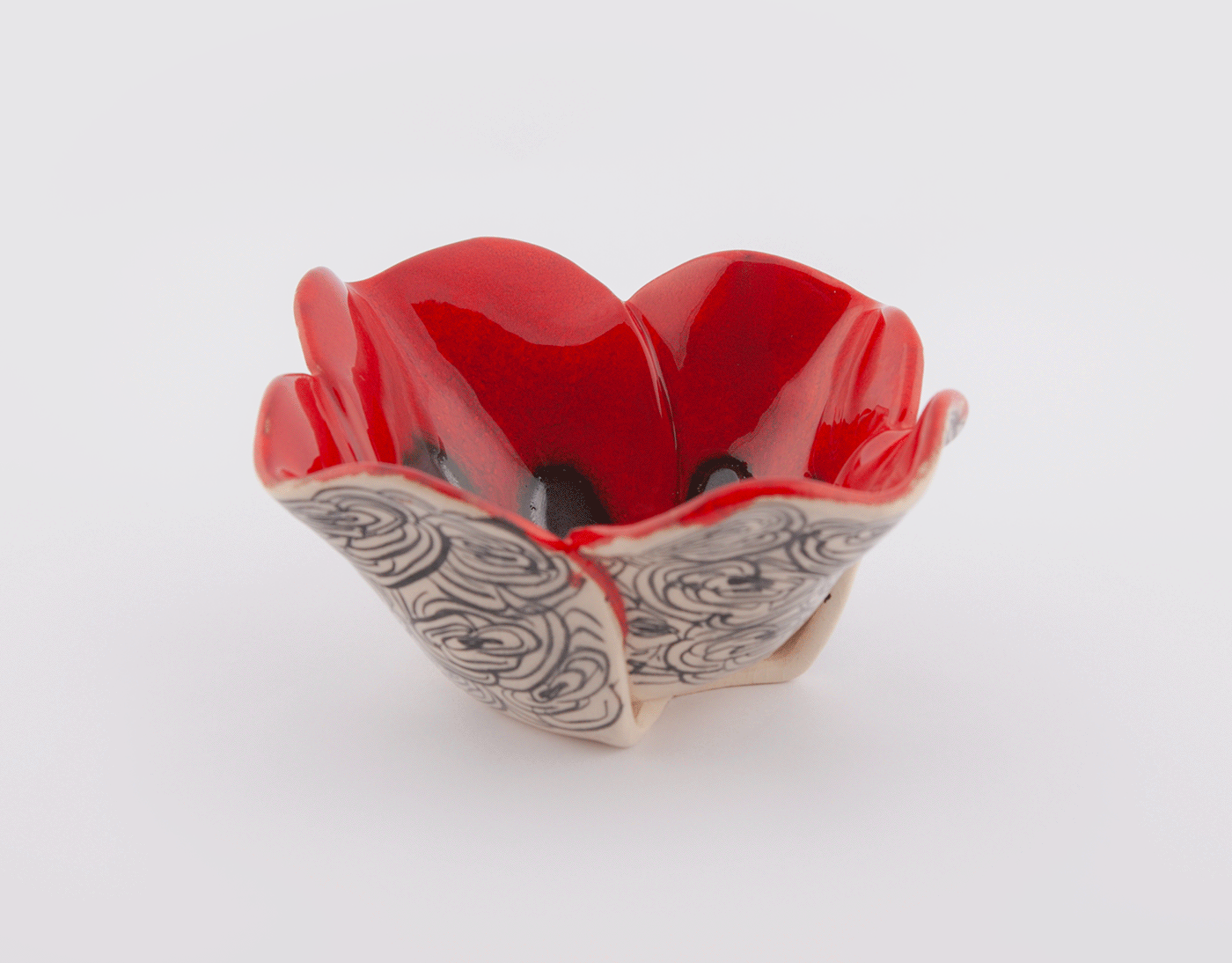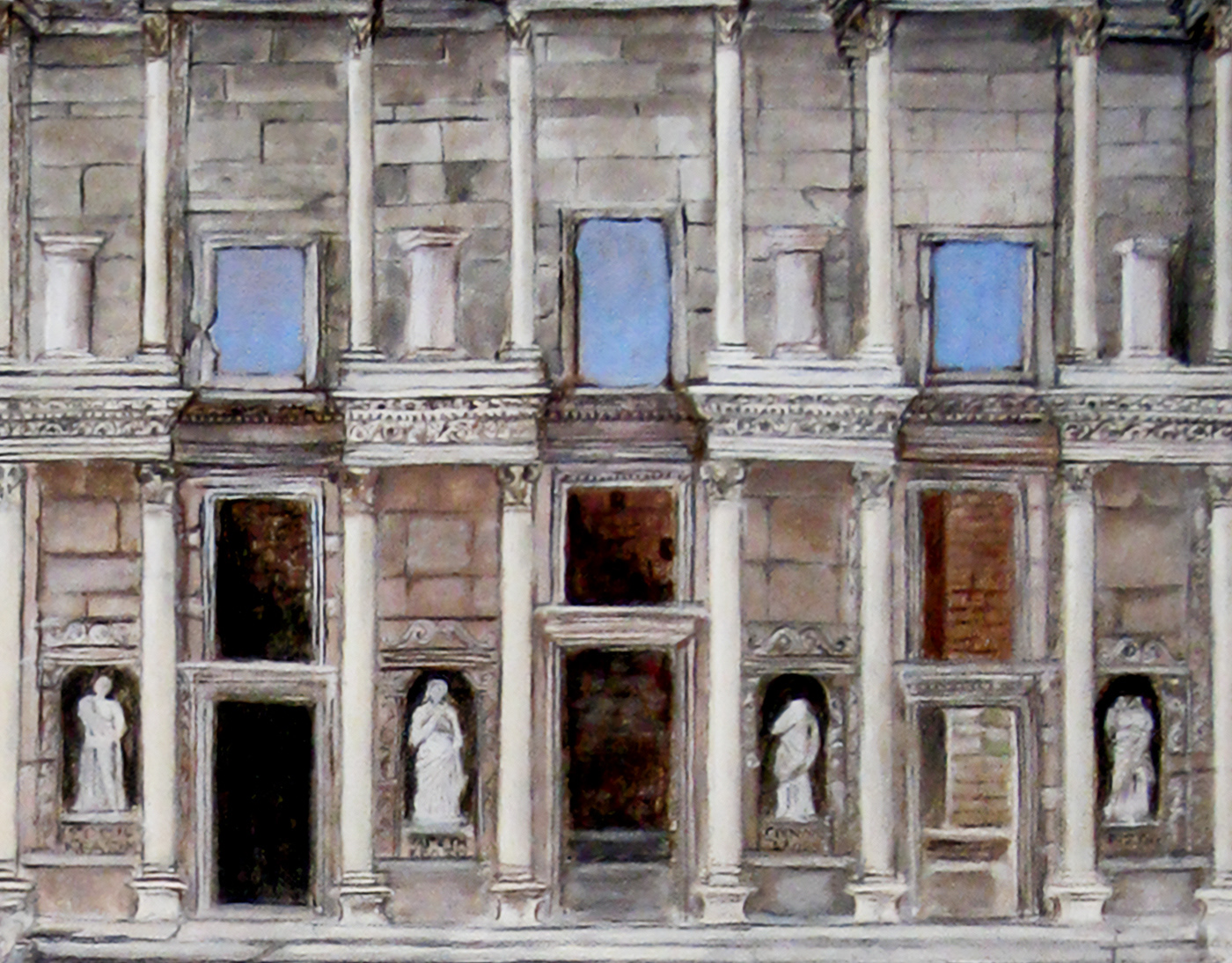SIRENS
The siren — a mythical creature with a woman’s head and a bird’s body — has long appeared in Anatolian artisan tradition, often in architectural decoration, cherished for the blessings and good fortune it brings. Each piece honors this mythical creature while reimagining it as a guardian of fortune and reverence.
The siren — a mythical creature with a woman’s head and a bird’s body — has long appeared in Anatolian artisan tradition, often in architectural decoration, cherished for the blessings and good fortune it brings. Each piece honors this mythical creature while reimagining it as a guardian of fortune and reverence.
The siren — a mythical creature with the head of a woman and body of a bird — has long hovered between worlds as guardian, protector, and talisman. In Anatolian artisan tradition, sirens often appear in architectural decoration, cherished for the blessing and good fortune they are believed to bring. The Kubadabad Palace tiles are among the finest examples: there, sirens stand alongside griffins, eagles, and birds in symbolic roles, guarding palaces, accompanying the spirit, and blessing those beneath their watch.
In my work, sirens enter into dialogue with Seljuk patterns, Ottoman ornament, and other layers of Anatolian art. At times, they merge with historical motifs; at others, they unfold into wholly original compositions. Each piece becomes not only a homage to myth, but also a guardian reborn — a vessel of protection, fortune, and reverence.
In my work, sirens enter into dialogue with Seljuk patterns, Ottoman ornament, and other layers of Anatolian art. At times, they merge with historical motifs; at others, they unfold into wholly original compositions. Each piece becomes not only a homage to myth, but also a guardian reborn — a vessel of protection, fortune, and reverence.
